To address the development and implementation of the PERMIND Training Guide, there have been two key ideas: the “ground connection” method and the “co-creation” approach.
The “ground connection” method forms in many ways a test in many ADP training activities that take place in the farm that ease communication, connection, motivation and involvement in an inspiring environment such as the FEMT. It aims to promote collaboration between persons and entities through the identification of mutual objectives and synergies.
Every person taking part in these training activities and workshops with this method start by feeling the place during a visit to the farm carried out by those responsible of the ADP.
This technique was implemented since the very first training activity in the farm with the construction of the Special Employment Centre since the main therapeutic and training method have been applied since the very beginning of the setting up of the farm itself (Figures Met.1 & Met.2).
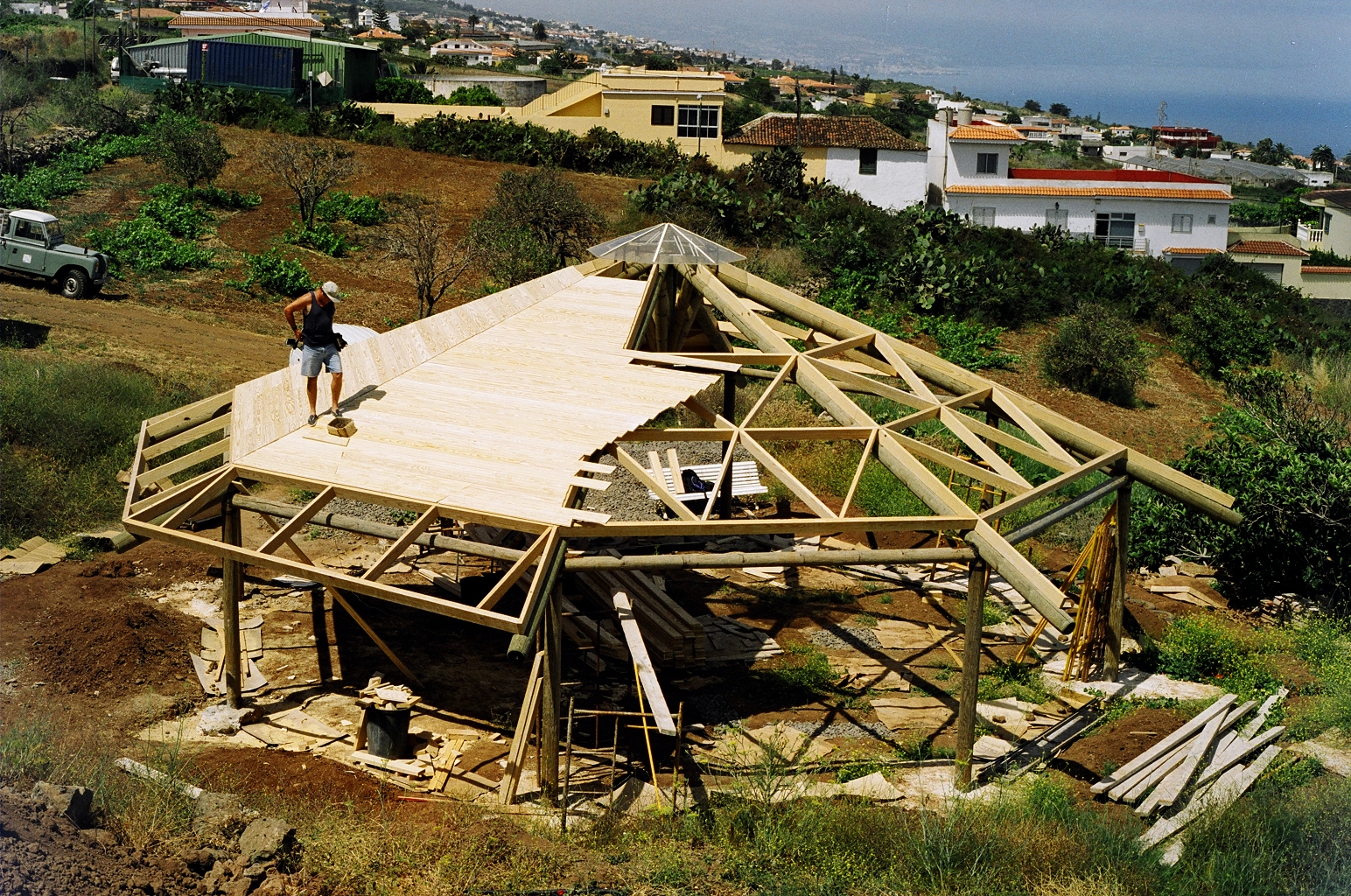
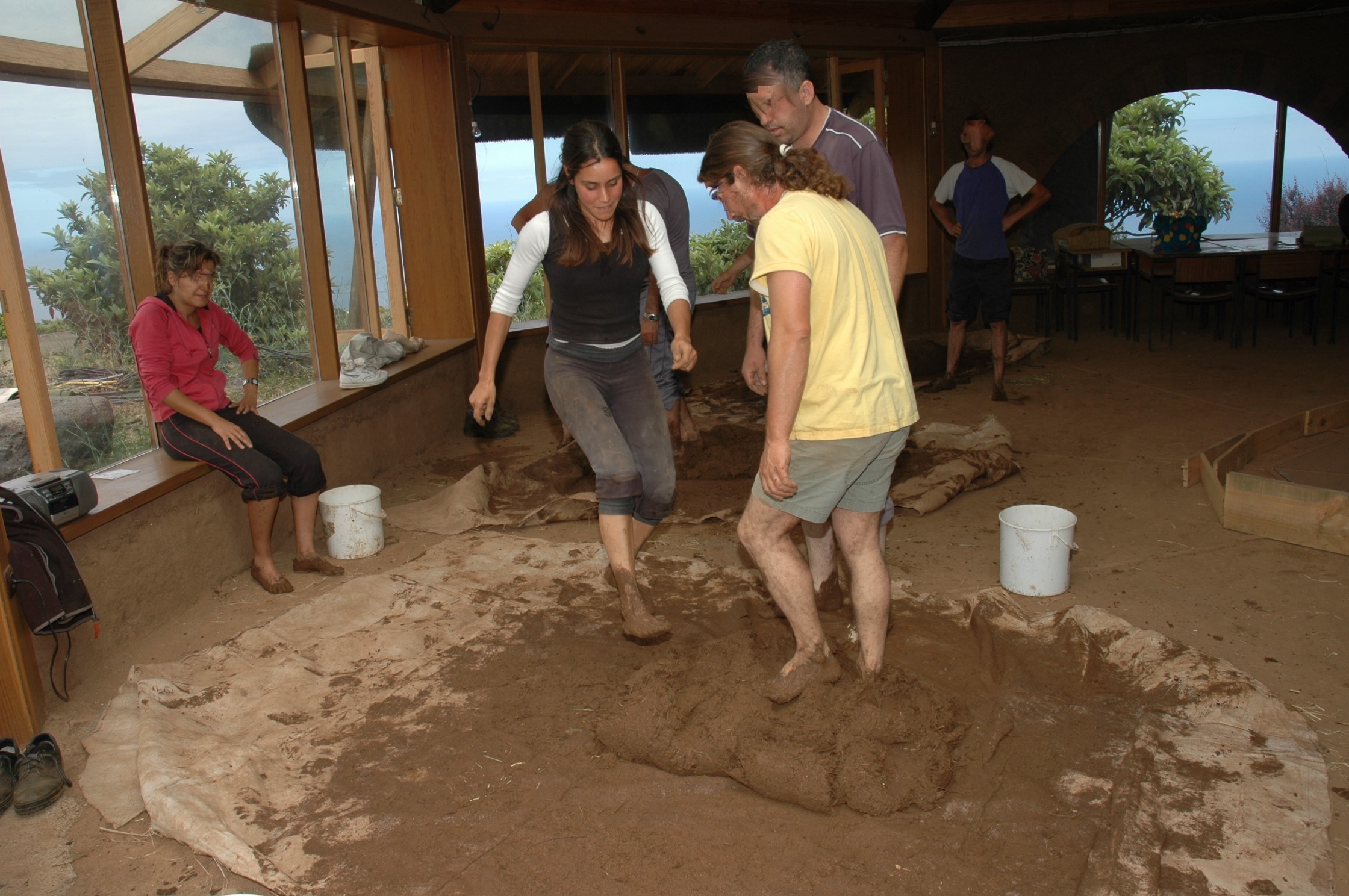
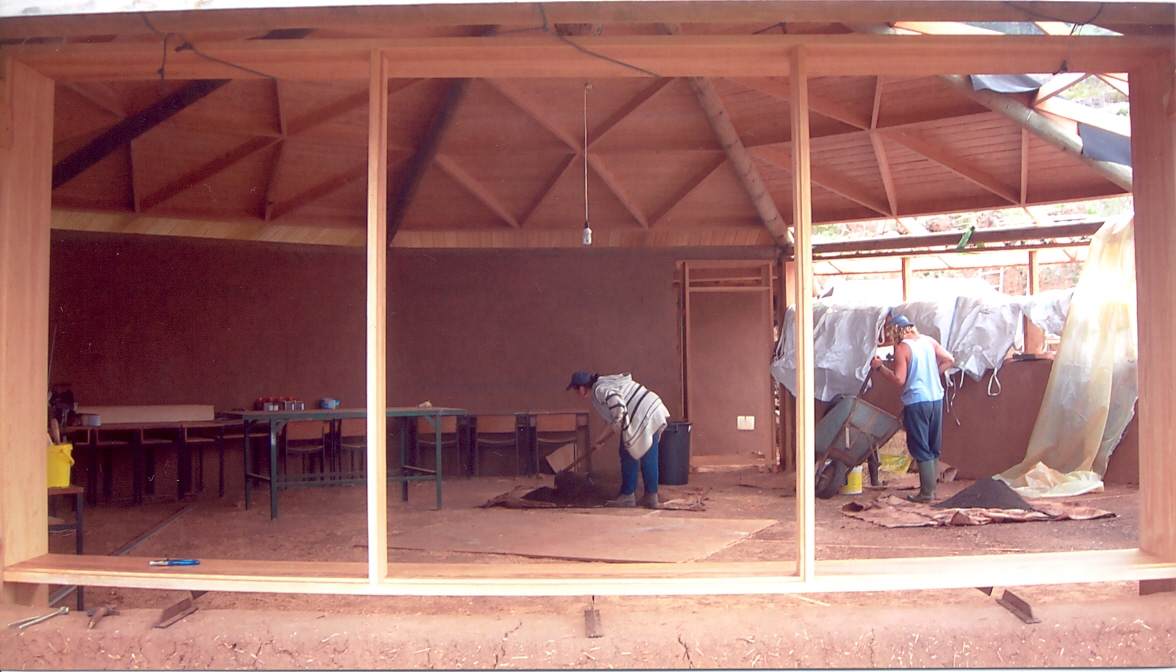
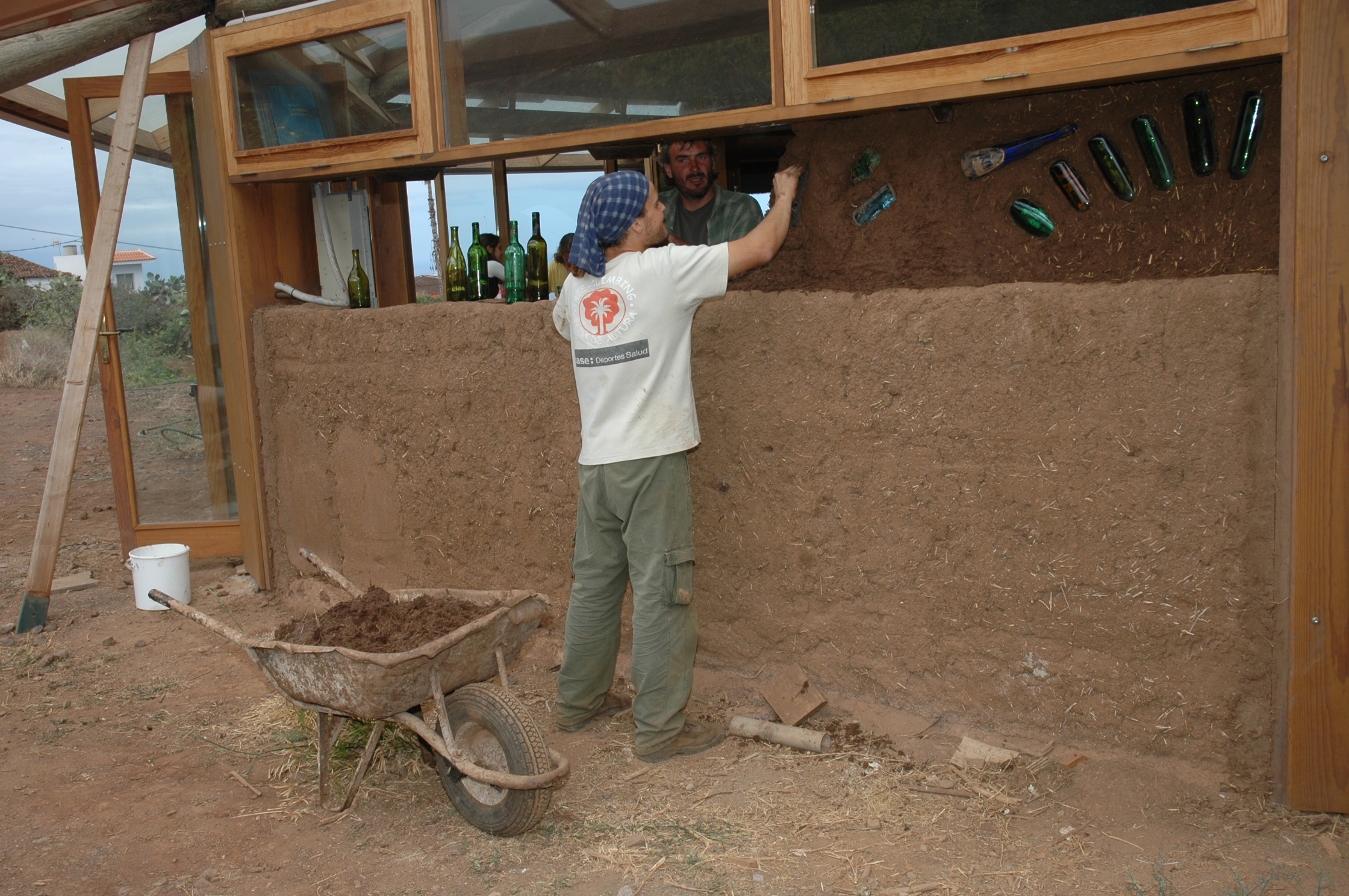
Figure Met.1.- Images of the building process of the bioclimatic classroom in the FEMT
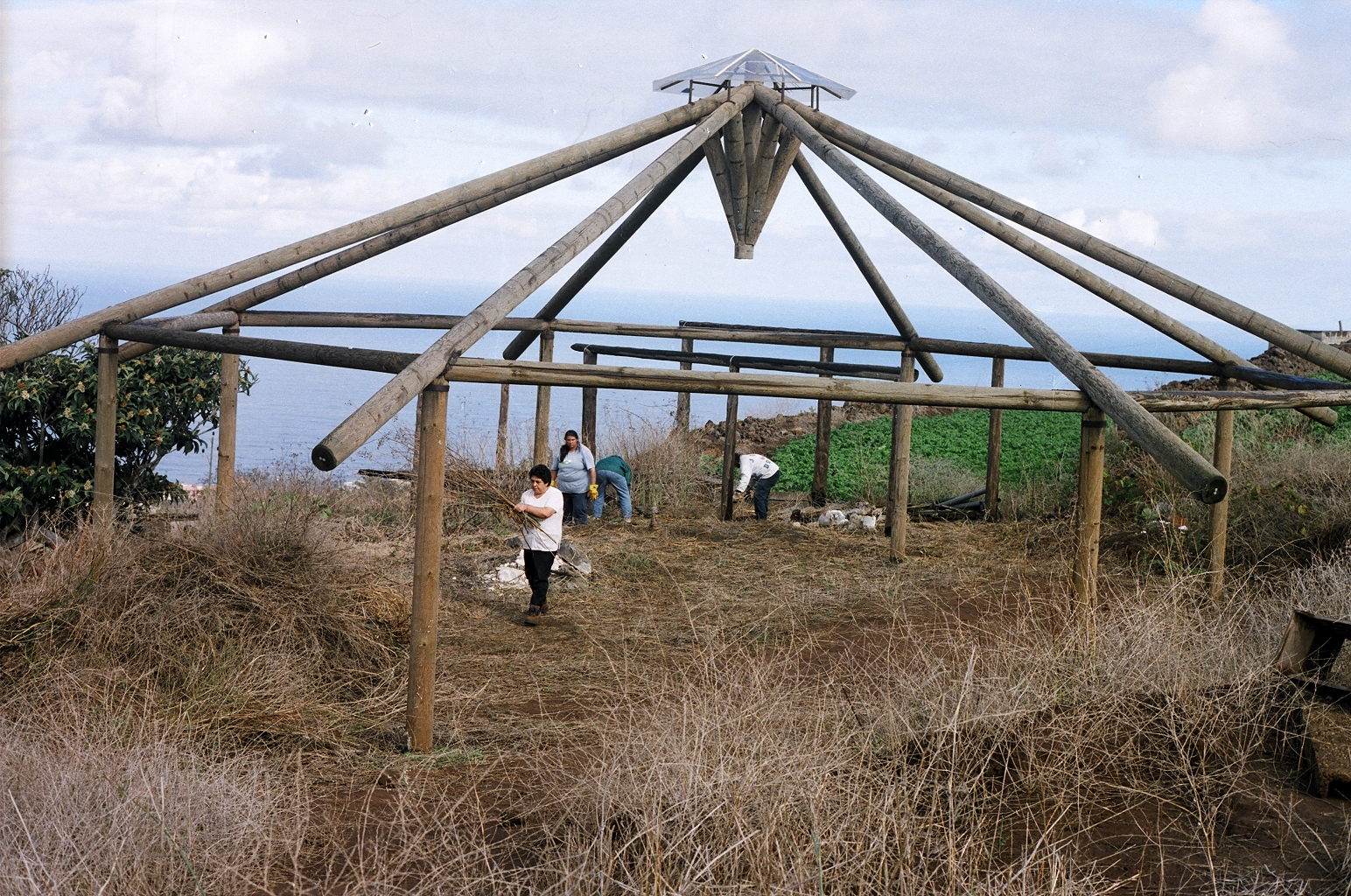
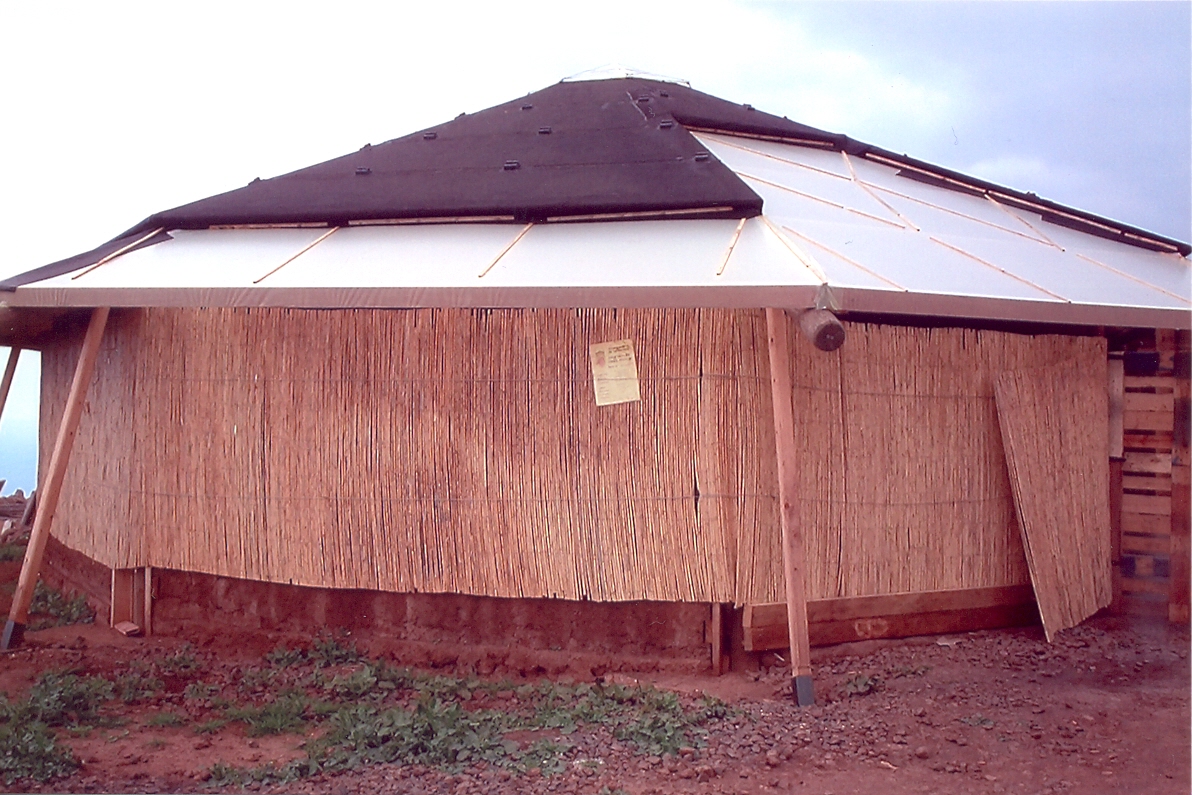
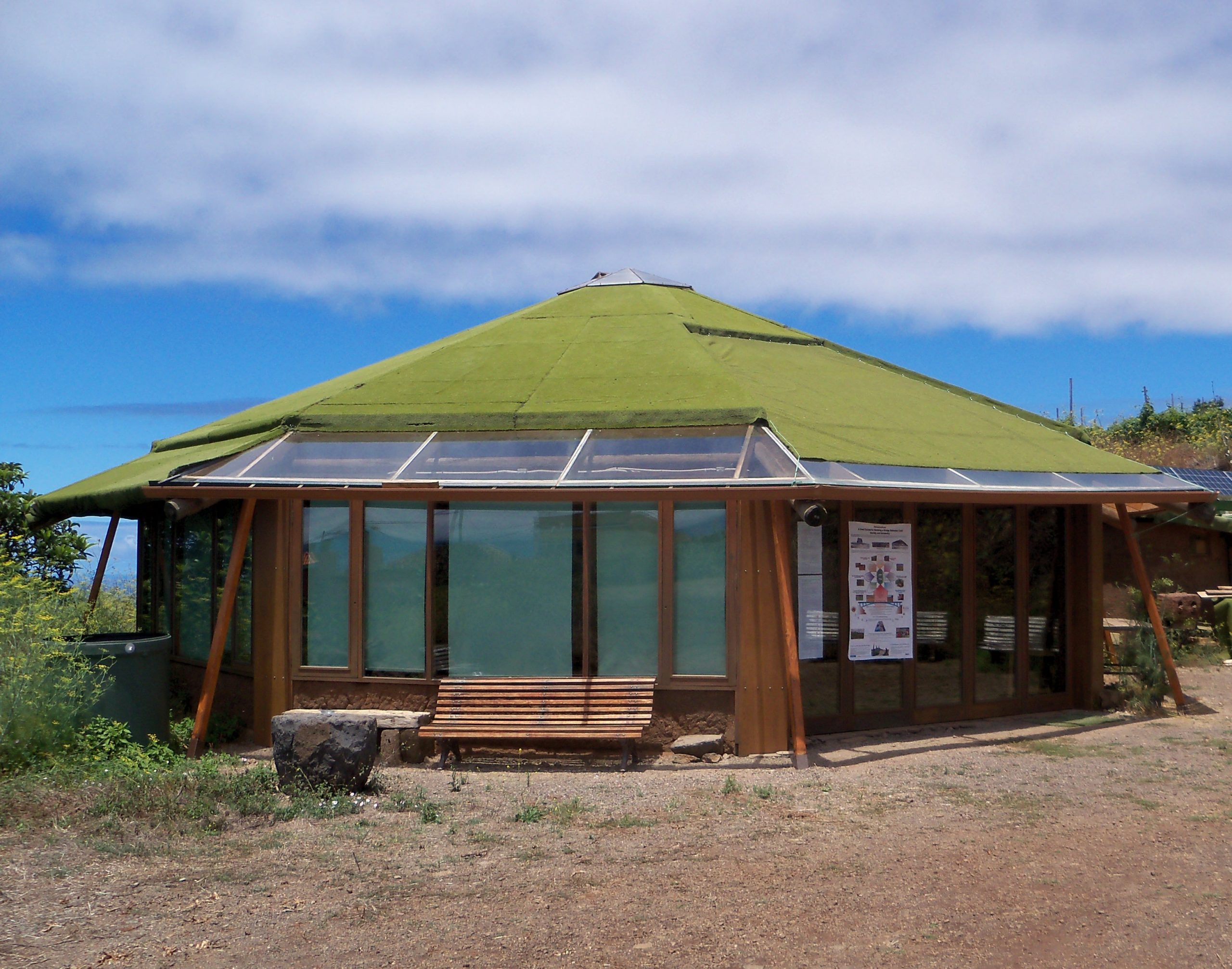
Figure Met.2.- Images of the classroom development
The CEE-FEMT implementation modus operandi is the “ground connection”: a permanent contact with the soil, animal and plant biodiversity and permacultural design. The use of soil as an educational and therapeutic tool allows developing responsibility, empathy, job training, perseverance, respect, tolerance, teamwork, the work well done, knowledge and respect for the environment… But overall it keeps students focused in the “here and now” as an important step in the development of their mental health.
It has been a co-creation method between the CEE-FEMP workers and ADP collaborators, students and volunteers that has put its own stamp on every training activity, just like it has put its stamp on the PERMIND project proposal in the very beginning and during this training guide preparation, as we will reveal below.
The “ground connection” methodology as a strategy to launch the PERMIND project was suggested and implemented between November 2016 and March 2017 during the co-creation stage. During the proposal development, the ADP asked the project coordinator about prior Permaculture knowledge of both the persons responsible of the partner institutions and their instructors that work with persons suffering from mental illness. She answered that there was little knowledge about Permaculture in those groups and if the project is approved, project coordinators and trainers would be different persons. The trainers would implement the one-year pilot PERMIND projects, with the aim to experience the 4 different seasons after assisting to an intensive ADP course of Training for Trainers in the Finca El Mato Tinto.
Starting from this very moment, the PERMIND co-creation approach is implemented. Nevertheless, this approach has already been taken into consideration in the PERMIND proposal when talking about the pilot projects to be developed by trainers and students with mental health problems.
The ADP suggested and argued the need of a kick-off project meeting in the FEMT in order to make every PERMIND partner feel and share Permaculture and its therapeutic potential.
This meant starting the project with the permacultural approach to “observe first and reflect about what is perceived afterwards”. It is a very profitable exercise consisting in getting to know and feel in situ that creates a link between Permaculture and mental health. Plants, animals, landscapes, buildings, technologies and human settlements integrate in harmony and symbiosis to establish a rich diversity. This shows how this integration manages to create a stability and endurance of the natural ecosystems and therefore its higher potential to achieve economic long-term sustainability.
The kick-off “ground connection” was seen as a momentous test for the beginning and the development of the project. It was presented and argued as a challenge that must be addressed in the project proposal.
If the initial “ground connection” in the farm was successful in a first meeting, it would probably encourage partners to share the Permaculture experience and its therapeutic potential with their department heads and the future trainers that assist to the intensive course of Training for Trainers (Figure Met.3).
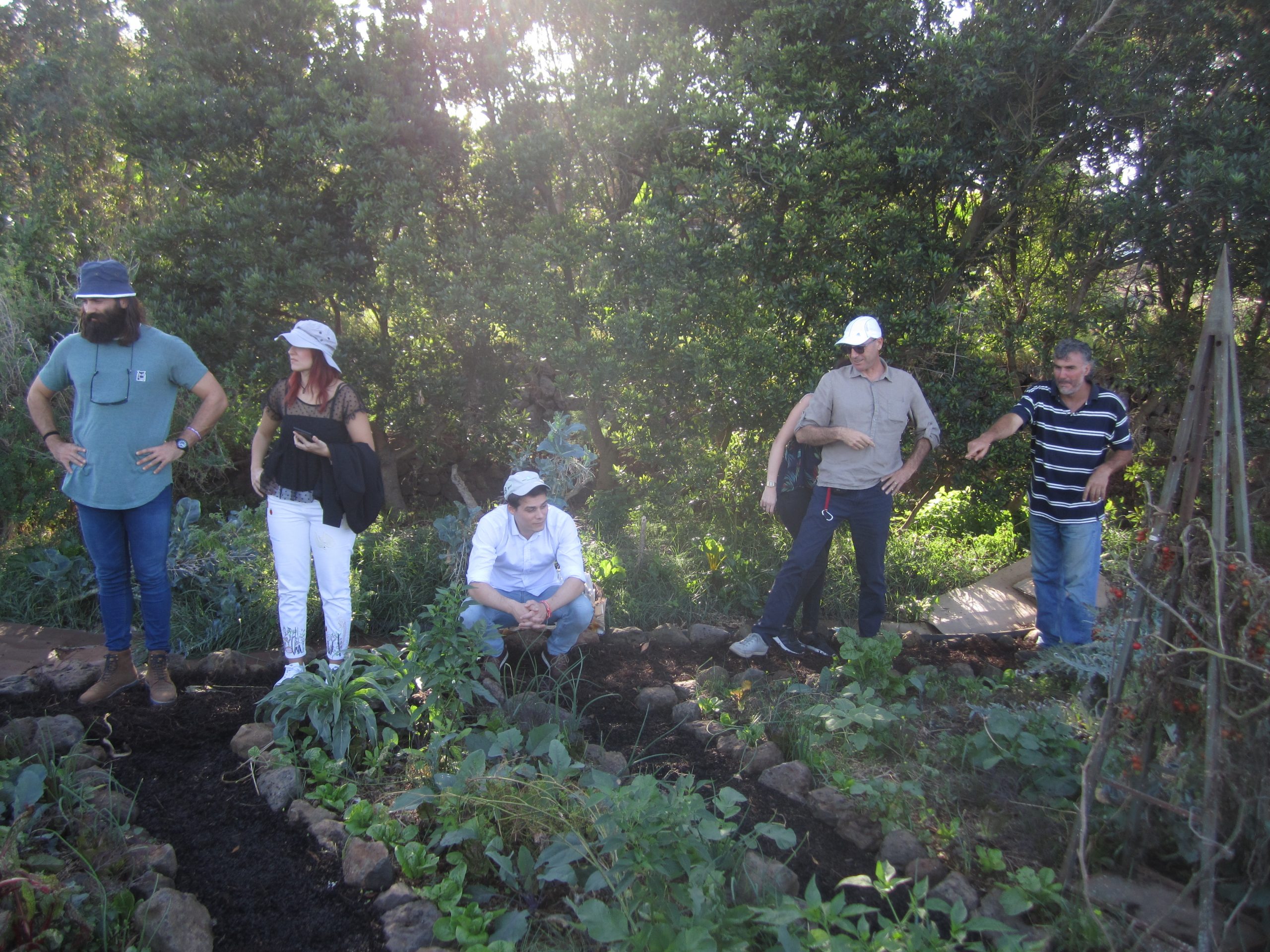
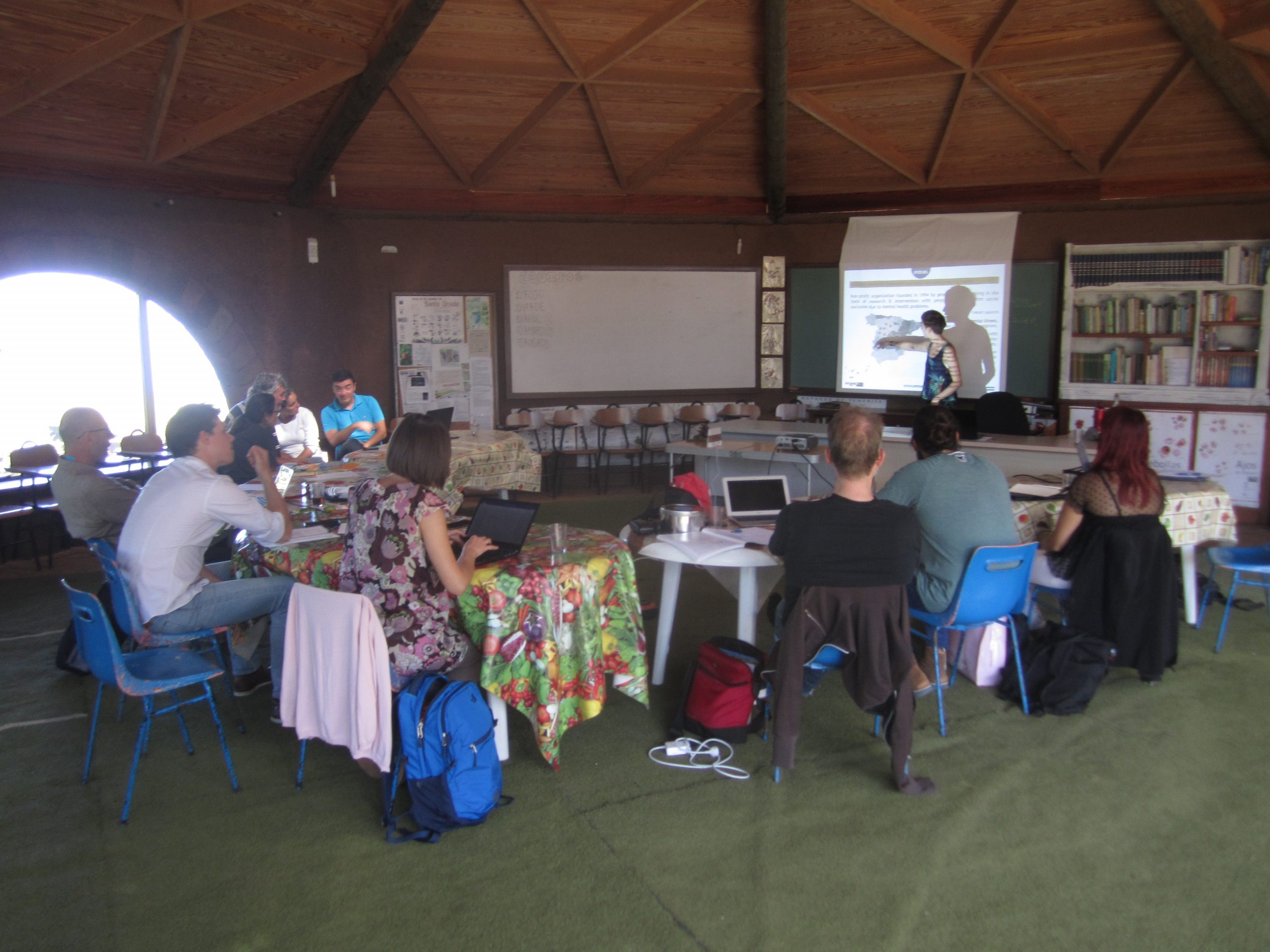
Figure Met.3.- Images of the “ground connection” during the kick-off PERMIND meeting in the FEMT (25-26 October, 2017)
In PERMIND we talk about pilot projects, monitoring visits to the pilot projects by the ADP, e-learning platforms, apps, but most of all the evaluation of the students of the various pilot projects and of the focus groups (constituted by the relatives of the student, technicians, neighbours, politicians, schools…) to achieve a critical analysis of the projects. All this co-assessment co-creation process has undoubtedly enriched the final PERMIND Training Guide project taking into consideration that at the end of the project the didactic units of the Training Guide are part of the free access e-learning platform.
The first meeting took place in the farmand, according to the first impressions about the “ground connection” methodology, it’s clear that the main objectives were achieved:
First assessment:
- Very “warm” and nice atmosphere. Also healthy.
- The concept of “equilibrium” was the most important learning during the study visit in the PERMACULTURE gardens.
- The development of a culture (permaculture) that combines and utilizes all sources of energy to create a healthy ecosystem.
- At the moment for me permaculture it’s about building circled relationship between the soil, plants, water, animals and especially people.
- Great, really great hospitality. Very nice organized the whole farm. The works, the connection with the society, the atmosphere between your team.
- The “nature circle” animals -plants-earth is impressive.
- How important is to cultivate soil, sun and water.
- Our eco-system is composed by cycles but for several reasons we usually think about them as independent and not related. Living in urban contexts, it’s really easy to forget this concept because fragmentation is the rule.
- The atmosphere is very nice. The idea of recycling the place shows how is everything part of our life, and can be used for the new beginning.
- The products are from the place. The mode of doing can be replaced in any situation.
- The initiative can be used if you … feel the soil … and if you can understand how the plants are growing.
- Totally different to what we know. Feeling of community and to be part of something, to be part of a natural cycle.
- Interesting, worthy to be known and also to disseminate it to general society
- The philosophy can be used in any situation of the everyday life: management, housing, marriage life, love, partnership, etc.
- Long-term work with relatively immediate results.
- Little investment that eases its sustainability.
- Attractive hook in a community atmosphere and associative movements.
- New professional profiles adapted to the special needs of persons suffering mental health problems.
- Philosophy transfer.
- How therapeutic can be for mentally ill people to cultivate and produce.
- A lot of possibilities of linking persons with mental health problems with this work philosophy.
- What heals the soil can heal the soul of people.
Impressions in terms of questions:
- The connection between Holistic slow approach vs or “just do it attitude”?
- Digitisation and permaculture?
- The connection and the way it’s connected to the high end cuisine restaurants?
- How many people can get food from this system?
- Are we always on time to recover a piece of land?
- Placemaking – the way the method and mindset of PM is connected to urban design. If you find a hole – plant!! [Referring to the act of the hole planting technique of a huge diversity of vegetables in a piece of land full of diversity that seems to be chaotic at first and which vegetable collection becomes an important weekly therapeutic exercise. We talked about this in the “ground connection” and we will keep on talking about it in the Didactic Units III and VI of this guide]
Impressions in terms of doubts:
- About its application in different climatic conditions with strong contrasts.
We have to take into consideration that these impressions were written down at the very beginning of the PERMIND project, two hours after the kick-off meeting at the beginning of the 2-year project.
The summary of what happened during the first meeting reflects very well in the first paragraph of the first project dissemination newsletter: “When we started the PERMIND project in September 2017, none of the partners participating in it had met face-to- face. After the first meeting that we held in Tenerife (Spain) in October, we really felt that we are a family. This is the power of permaculture” (January 2018).
The Training for Trainers course became the first test to assess the guide quality given the opportunity to assess the differences between what trainers have read in the guide prior to the course and what is taught in the course. At the same time a co-creation exercise takes place during the course, which underlines the guide quality since the most frequent questions serve to create a Frequently Asked Questions section to be added to the e-learning platform.
The whole image of a “ground connection” with people from various cultural and climatic origins, with shared professional backgrounds and probably different therapeutic cultures, enriches the course itself and the guide and the pilot projects implementation. It certainly favours the creation of a PERMIND exchange network.
Another expression of the co-creation method happens during the PERMIND Training Guide development itself, in the linguistic field. Once written in Spanish by the ADP it was translated to English as the interface language for its later translation to other partner languages (Slovenian, Greek and Swedish).
The ADP requests every partner to not start translating the guide from English until the contrast between what is told in the guide and the information and training transferred during the intensive course has happened. They were asked to physically approximate to the course through the English version guide and to read it as if it were a touristic guide for a place worth visiting. In this case it is about a therapeutic place based on Permaculture.
During the intensive course week they met face-to-face with 22 years of permacultural experience of trial-and-error and 16 years of use of Permaculture as recovery tool for mental health, and which has been summarized and systematized in the PERMIND Training Guide they have read shortly prior to visiting the place. This turns out to bea priceless quality test to assess the guide and to visualize the replicability potential of the pilot projects.
It has also proved to be a co-creation opportunity to work with the trainers as a result of the critical remarks that result of the meeting. The feedbacks from the trainers was revealing to improve the guide quality and to ensure the project evolution. The learning curve derived from the feedbacks is a process that was taken into consideration during the whole implementation of the co-creation pilot project between the instructors and the students. The instructors were the transmitters of the Permaculture approach to mental health in their respective institutions – institutions with a long record in the health field.
An important part of the learning process is to reflect on what we learn. Thus, during the training course the trainers take their time at the beginning of the day to analyse the lessons of the previous day. Trainers tested that it was an enriching way to reflect step by step on the learning process and to promote knowledge exchange between participants. It’s recommended to add this follow-up moment at the beginning of each step during the learning process.
The ADP monitoring visits have also been a reciprocity opportunity to get both parts together in the co-creation approach. It was useful for the ADP to identify the problems that the pilot projects were facing; to solve concerns and doubts shown in the kick-off meeting of the project in October 2017; to take into consideration different climates and cultures; and to enrich along with all of it the national and international coverage of the PERMIND Training Guide.
This joint PERMIND construction by means of evolutionary co-creation method has been very enriching for the development of a guide of this nature. The crowning moment was the assessment of the students themselves during the guide application in their respective pilot projects. The ADP, as responsible of the guide,also had the opportunity to share its impressions with those students during the monitoring visits – visits that were important to achieve the PERMIND objectives in the eyes of the project assessors.
This PERMIND Training Guide is not a proper guide about Permaculture, it is a guide focused on the healing aspects of Permaculture. That is why we begin with “Permaculture as therapy” in the Didactic Unit I and we follow with the remaining units with the design and maintenance of Permaculture and the therapy from a simultaneous approach: “Designing the place” (II); “Designing our edible garden” (III); “Edible garden forests” (IV); “Maintaining our edible garden” (V); “From the seed to the harvest” (VI) and “Bioconstruction as a form of therapy” (VII). We finish the guide with an Epilogue by means of a balance of Permaculture virtues, highlighting food, habitats and healthy human relationships.
Have a good permacultural and therapeutic trip!
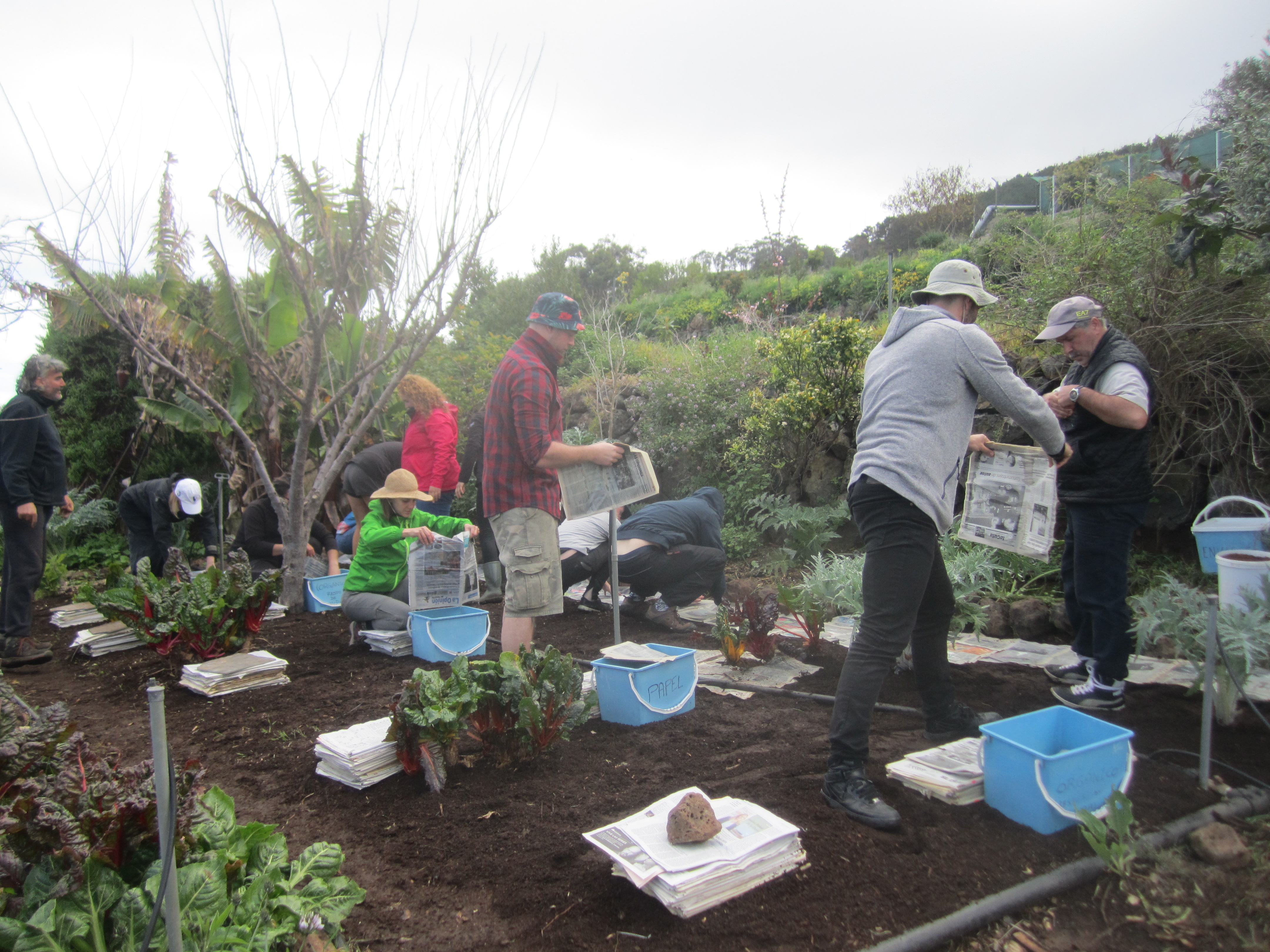
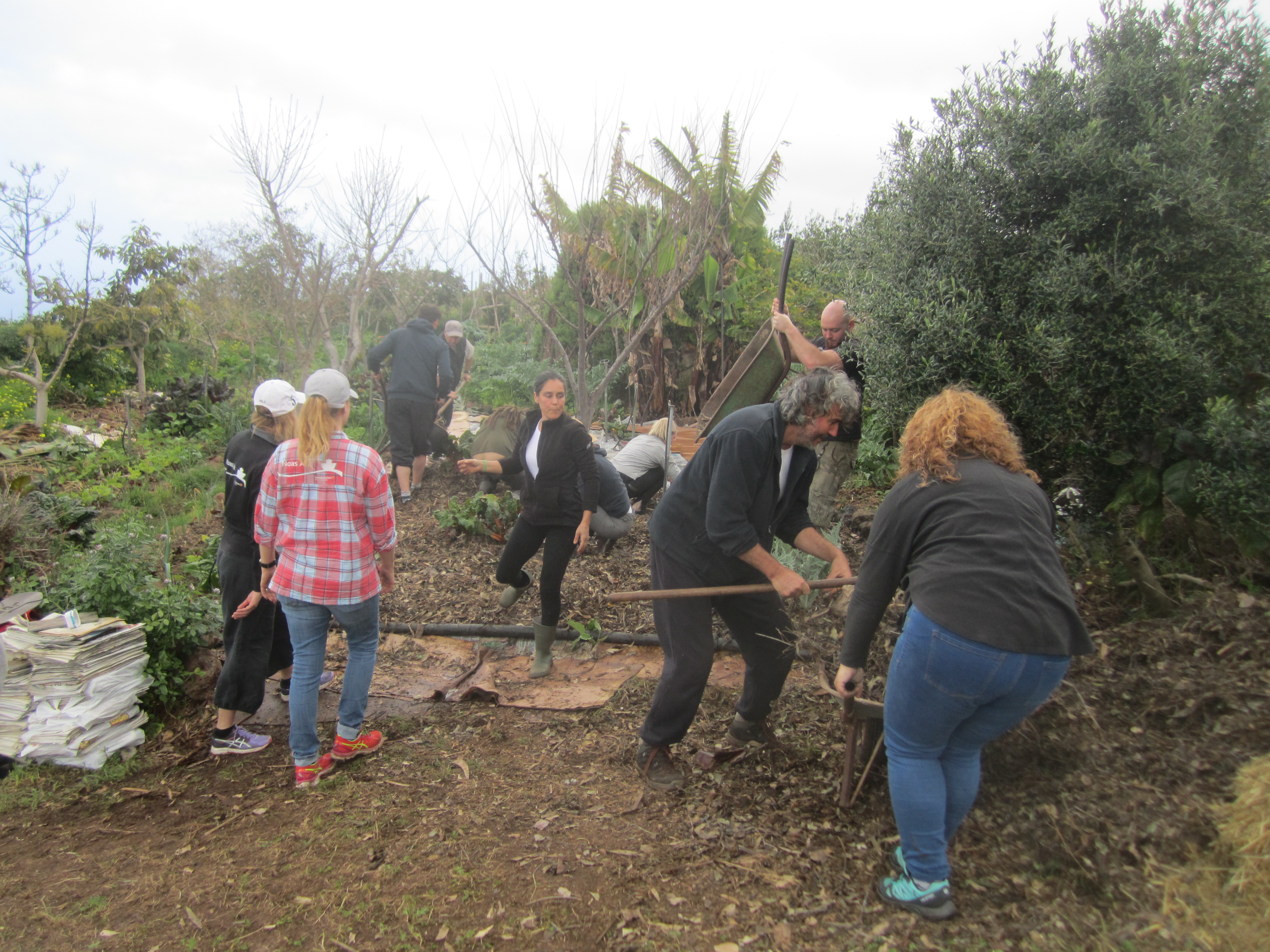
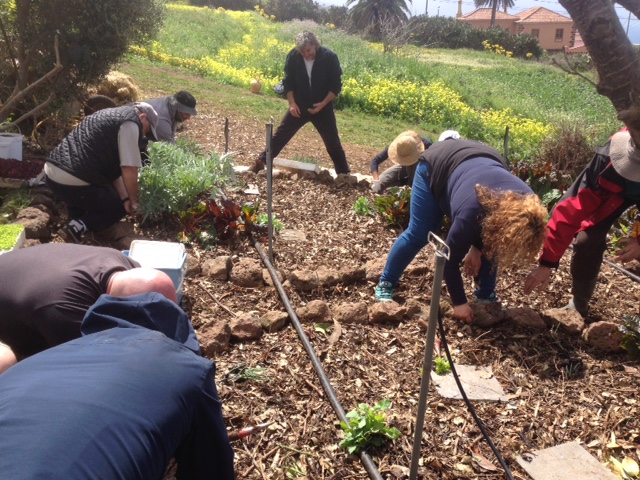
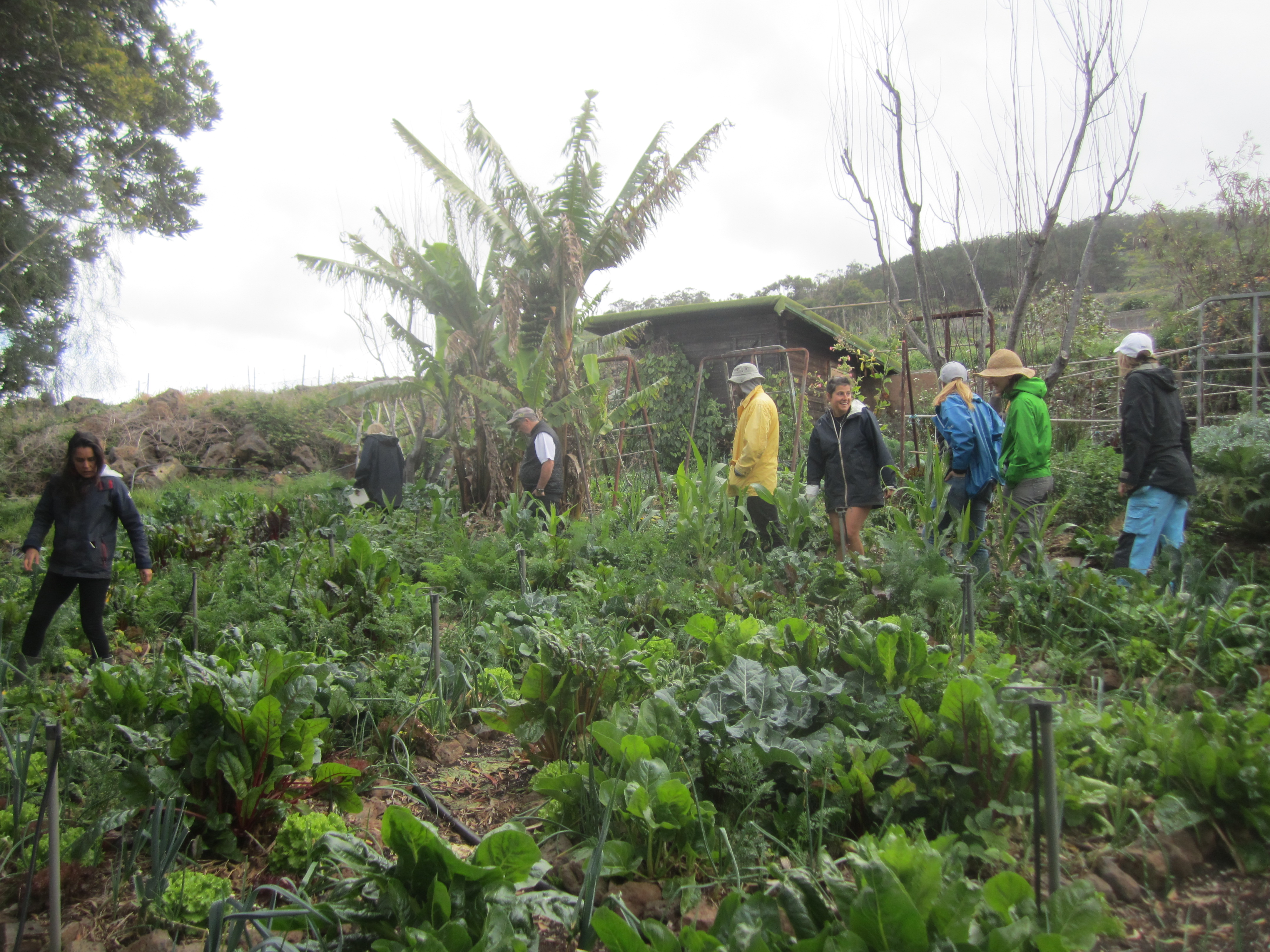
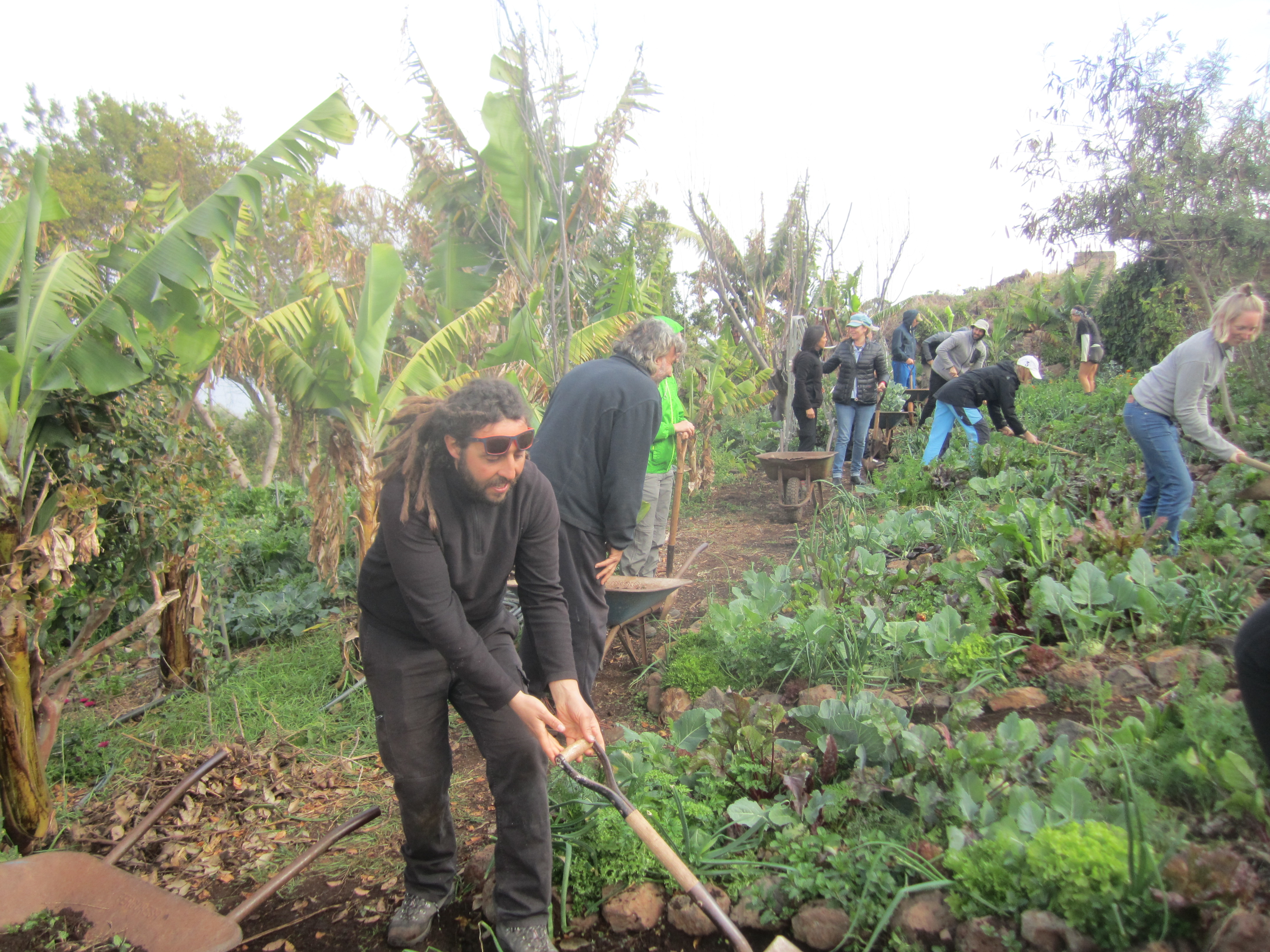
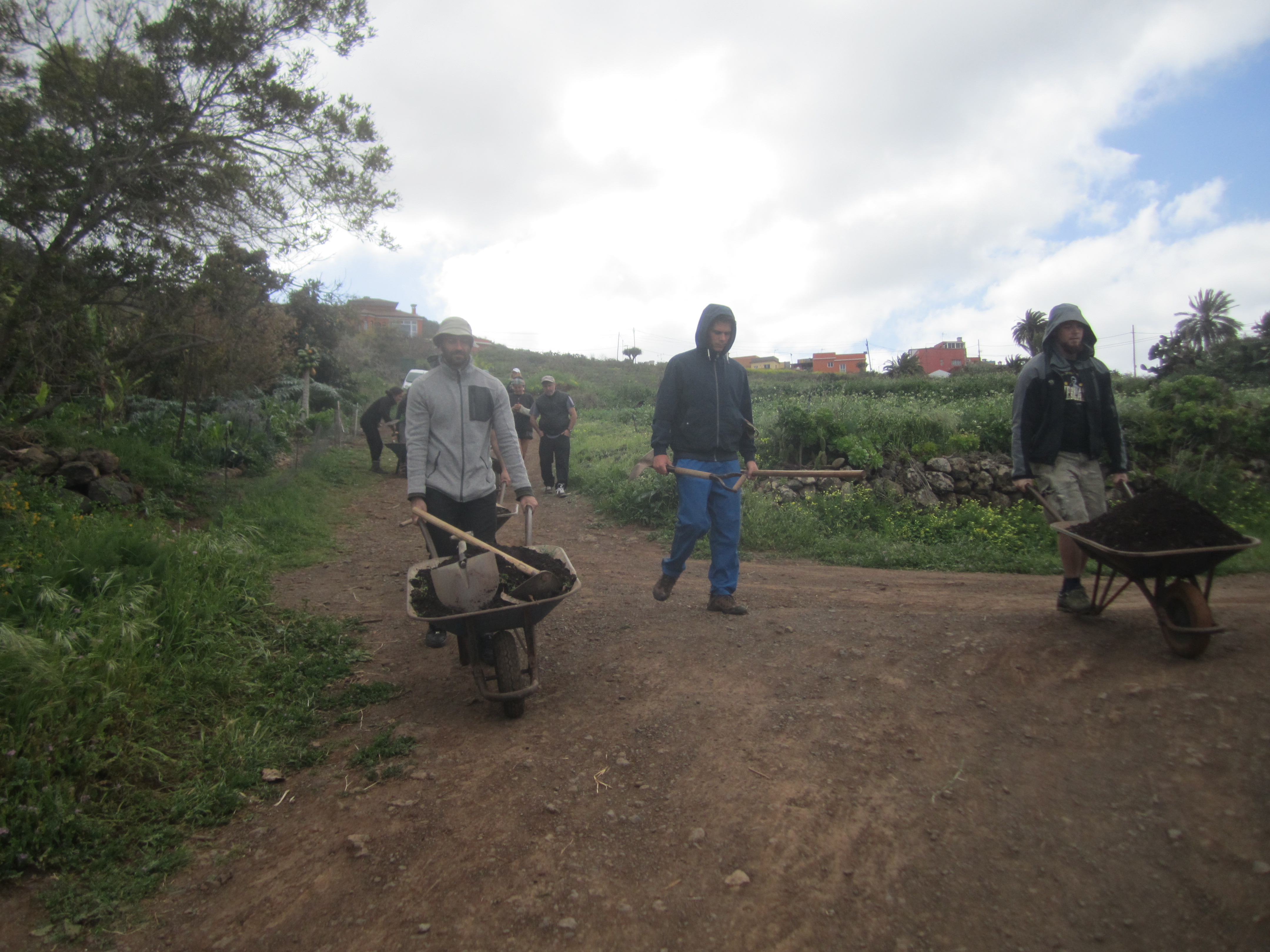
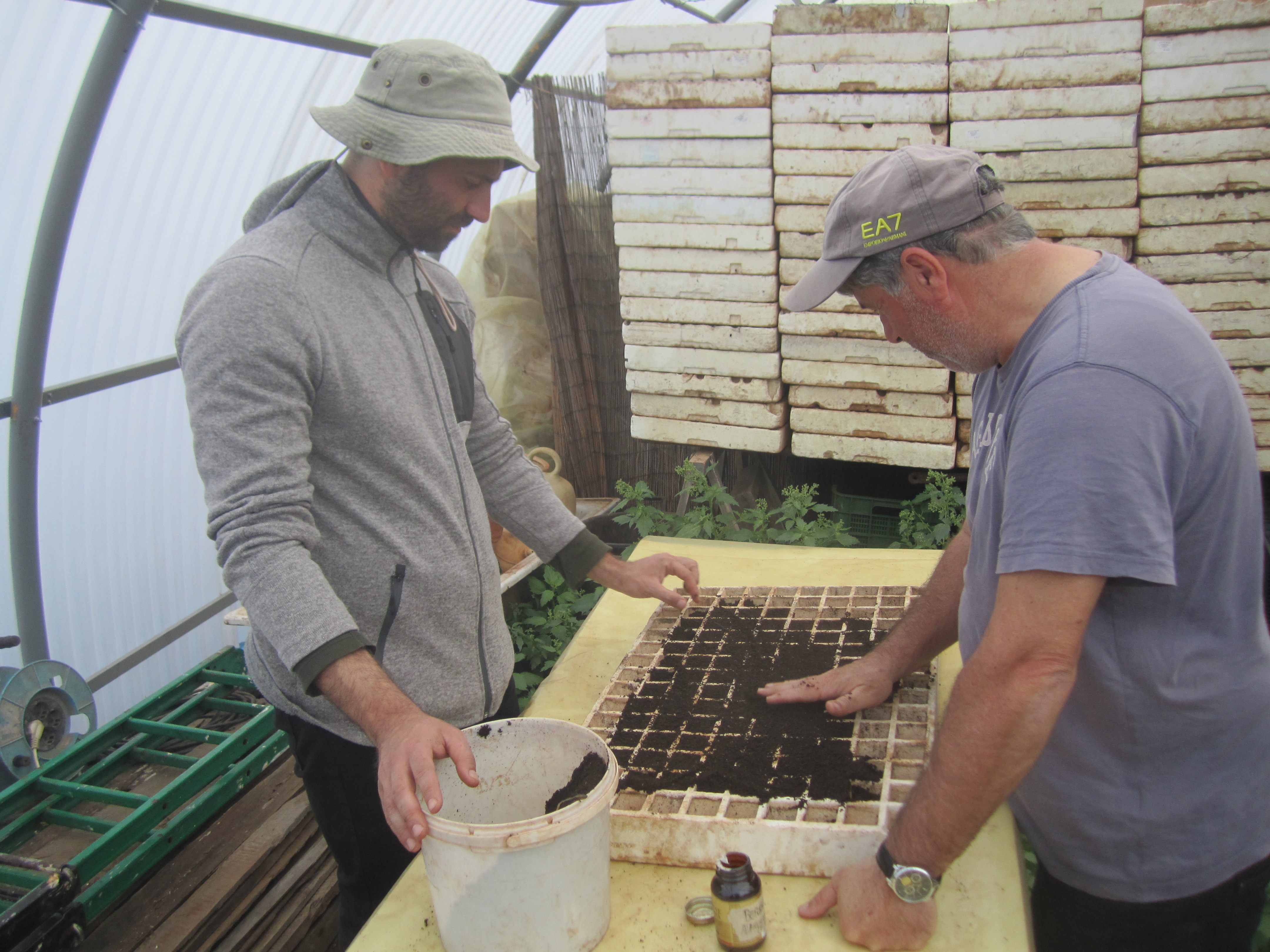
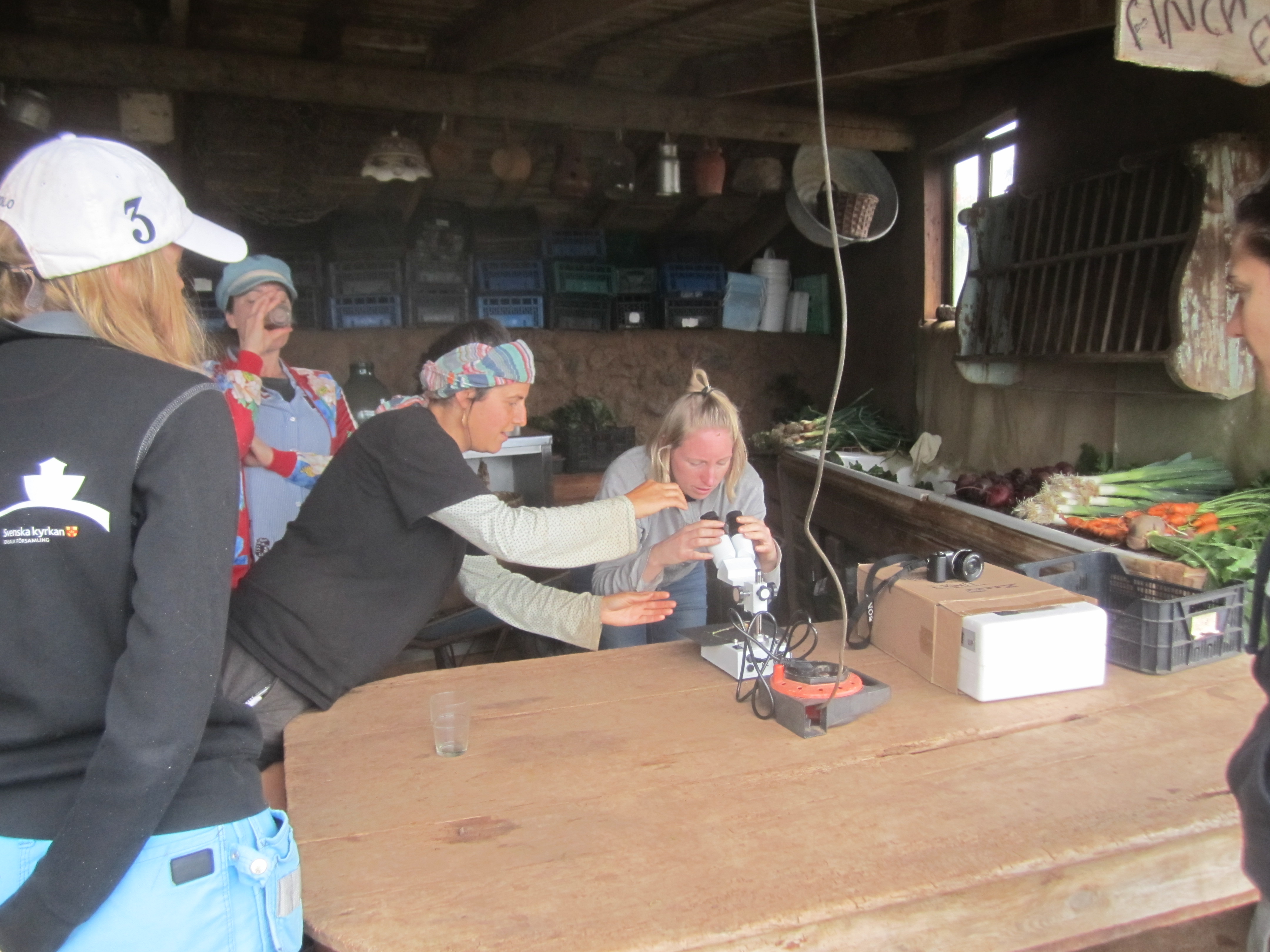
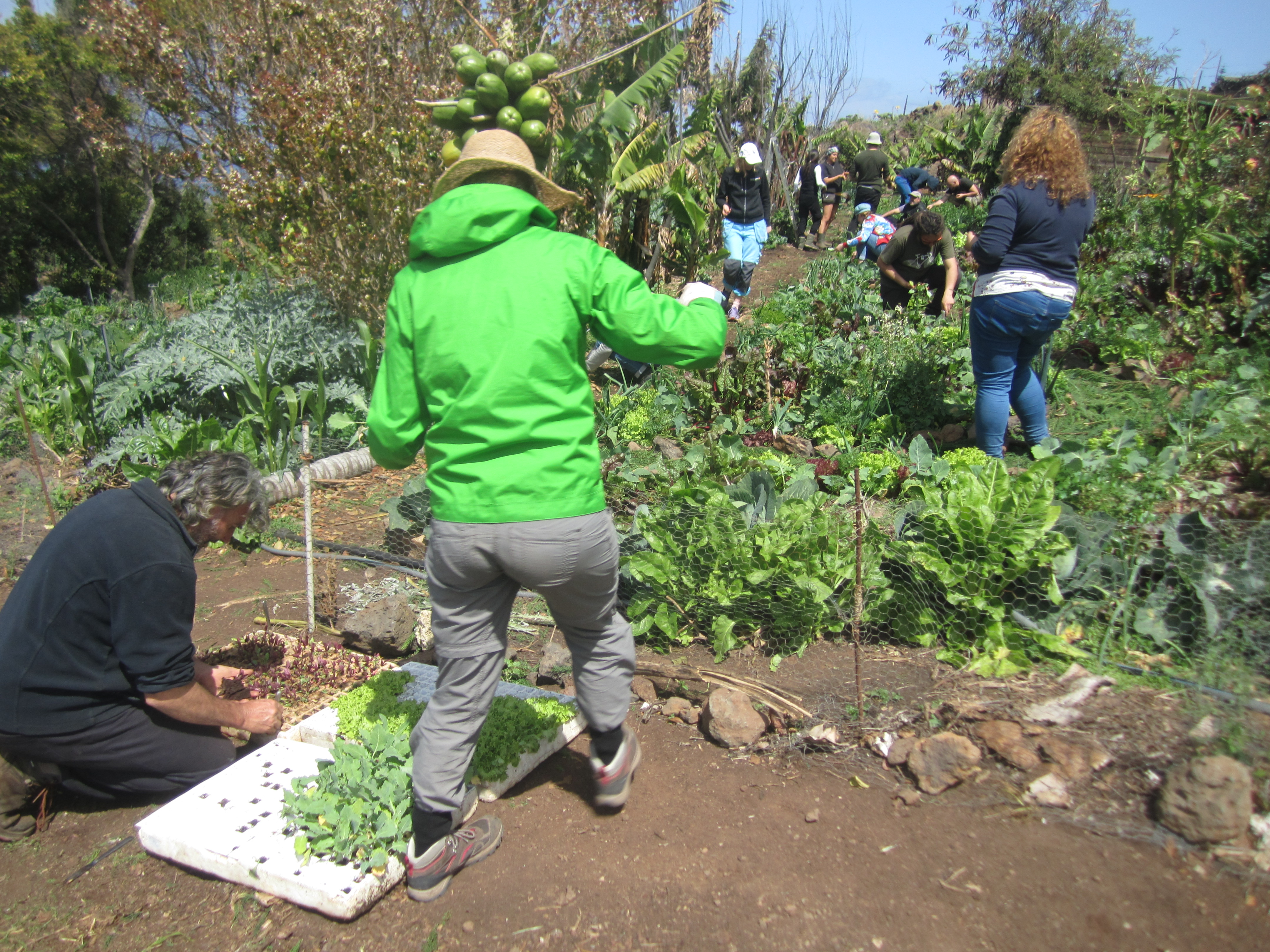
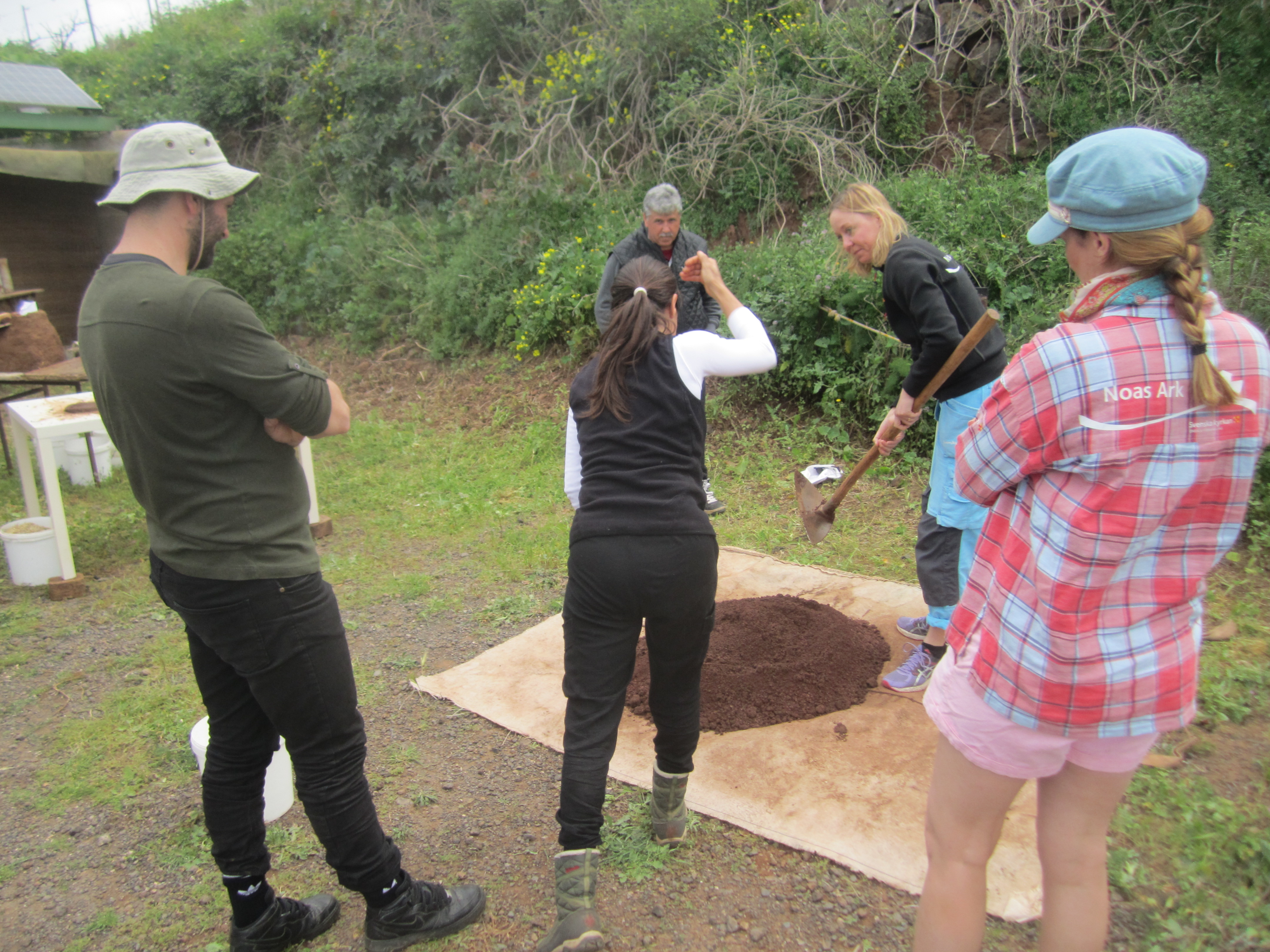
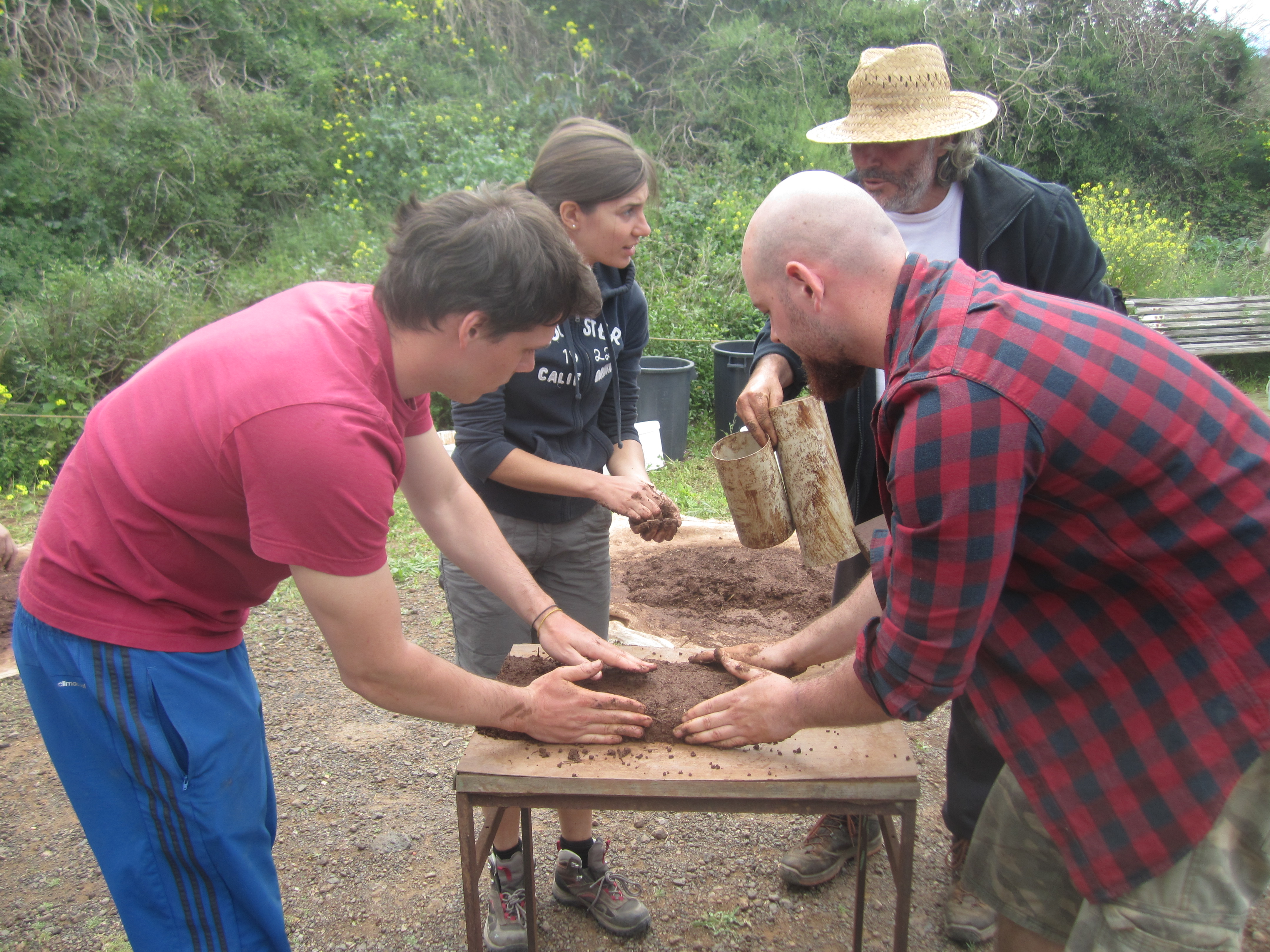
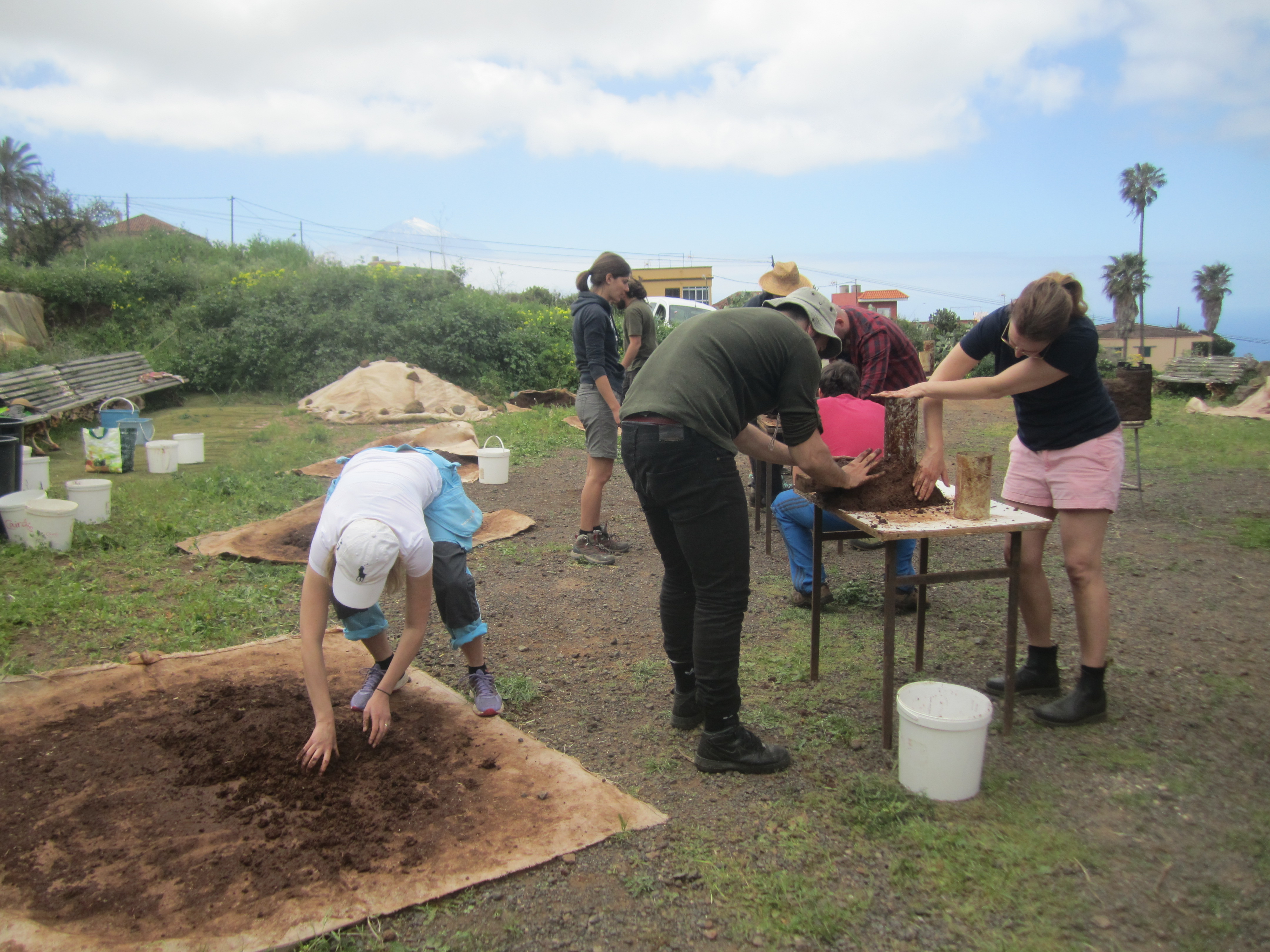
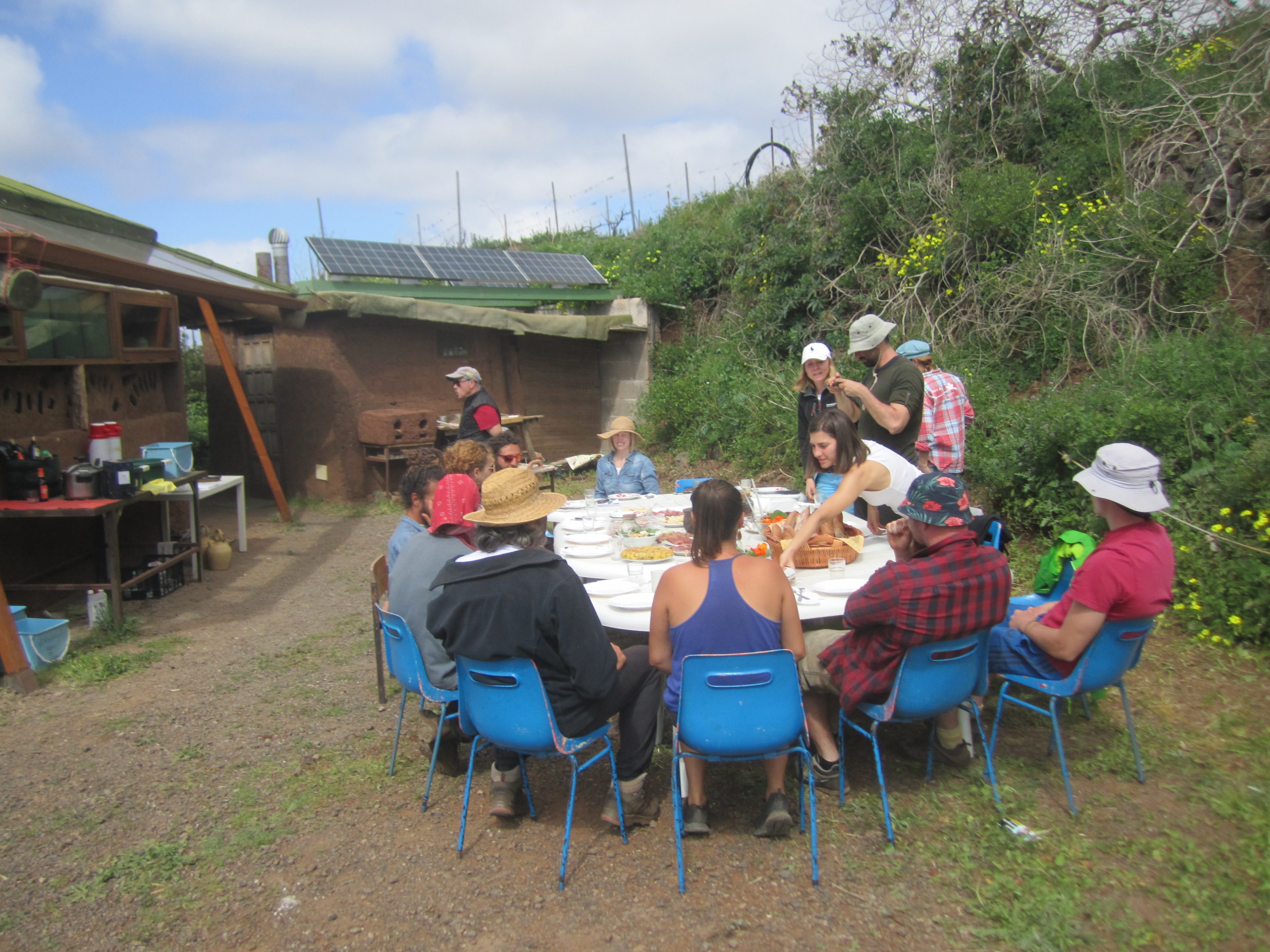
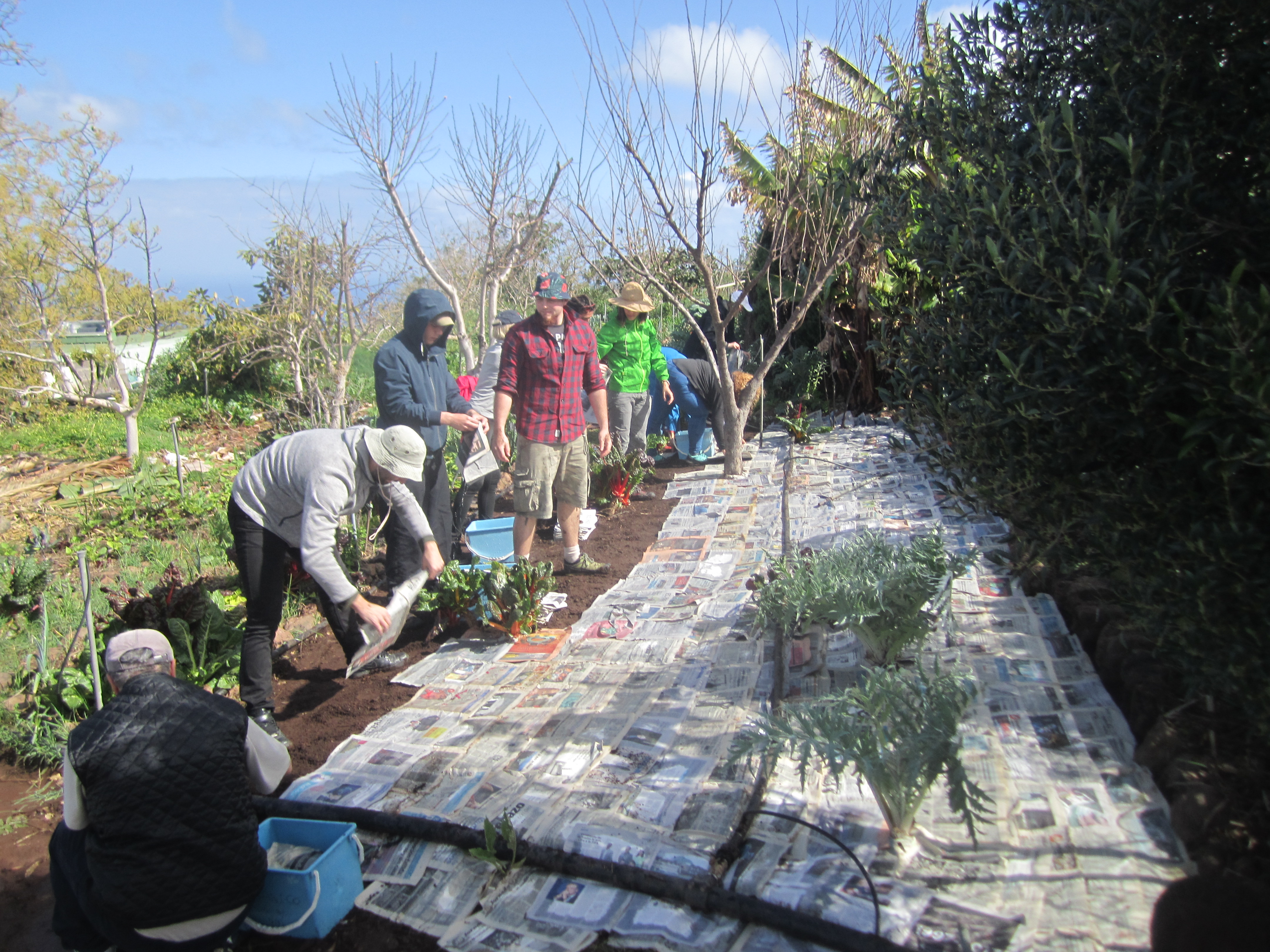
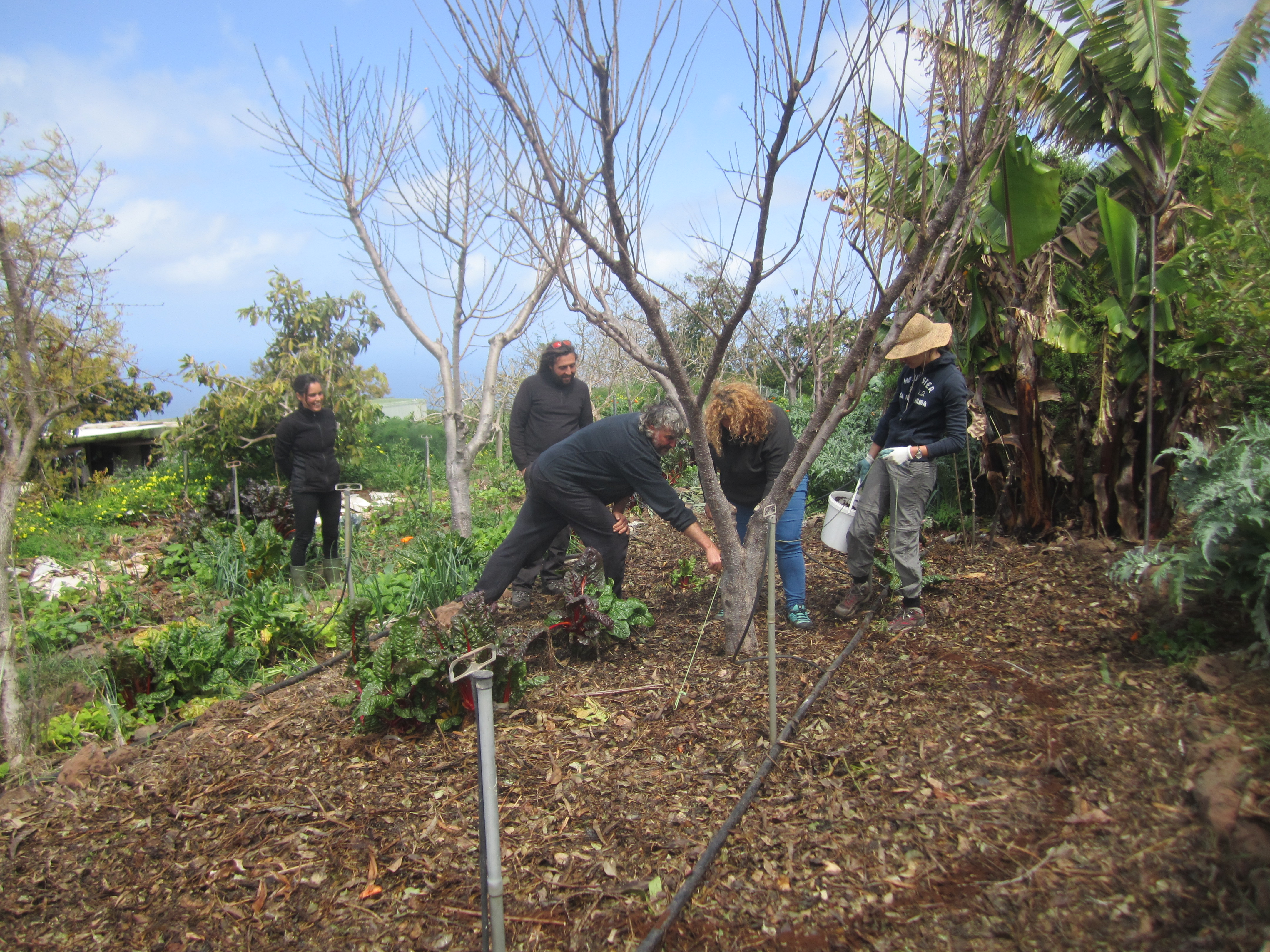
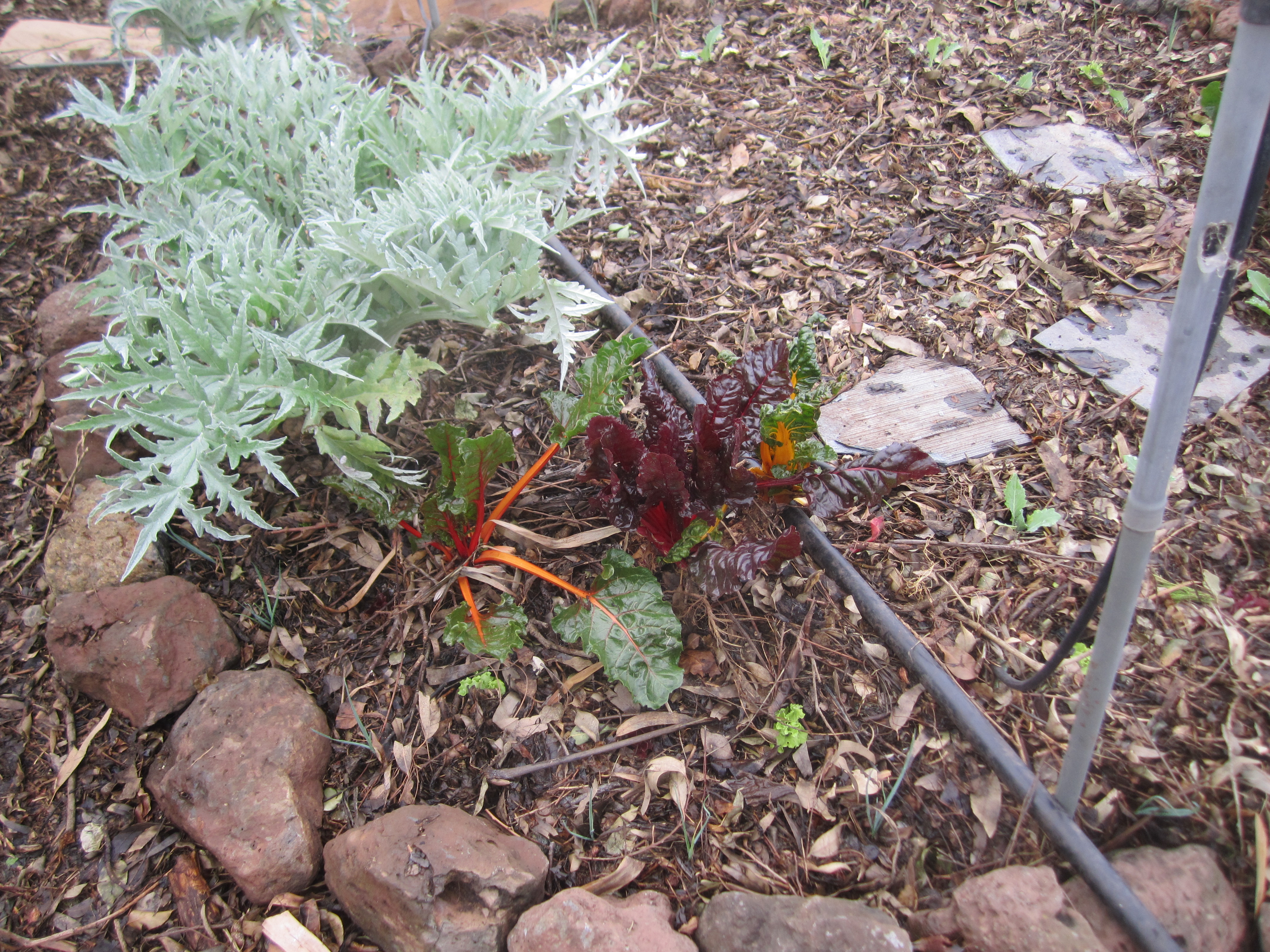
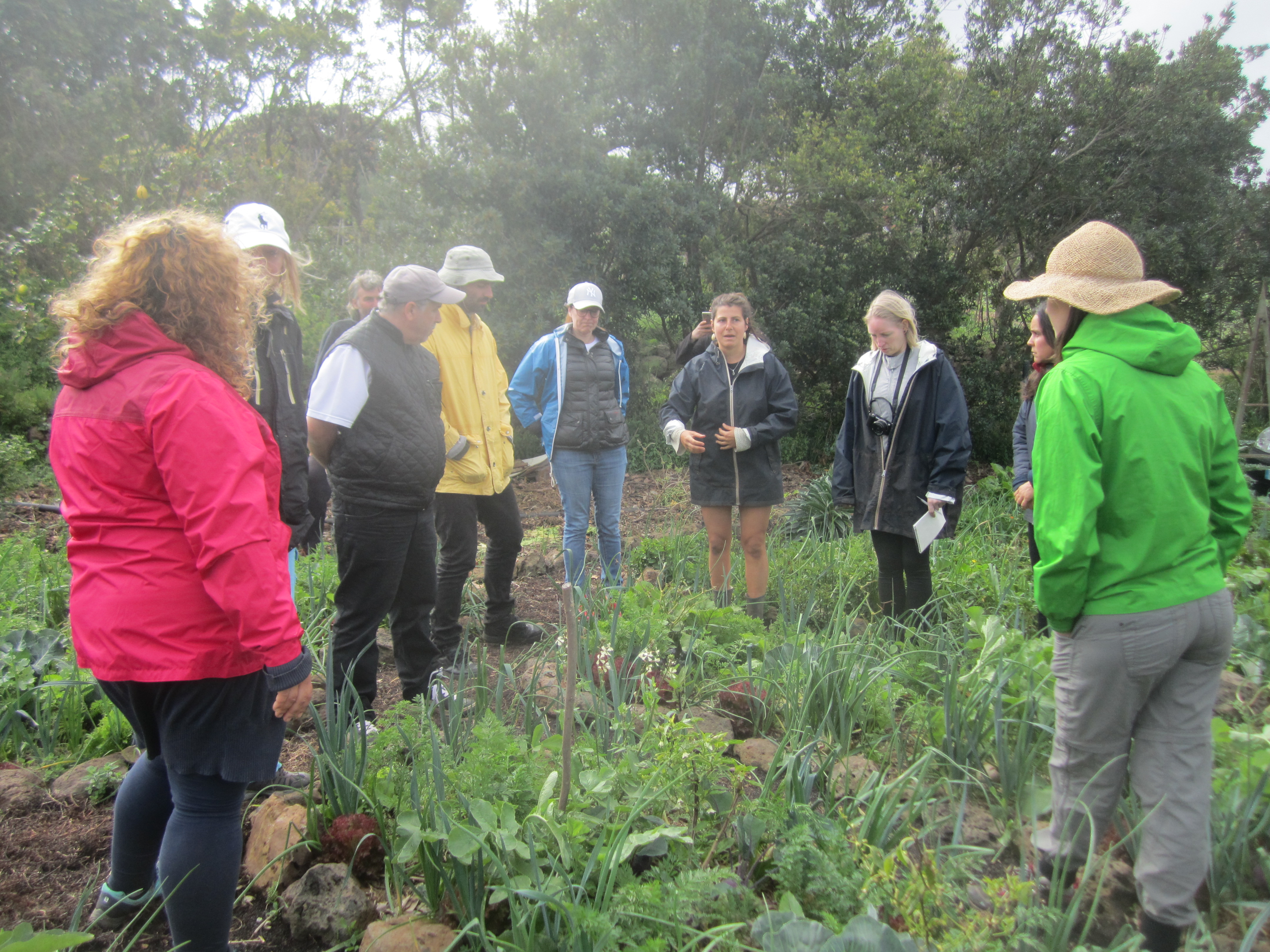
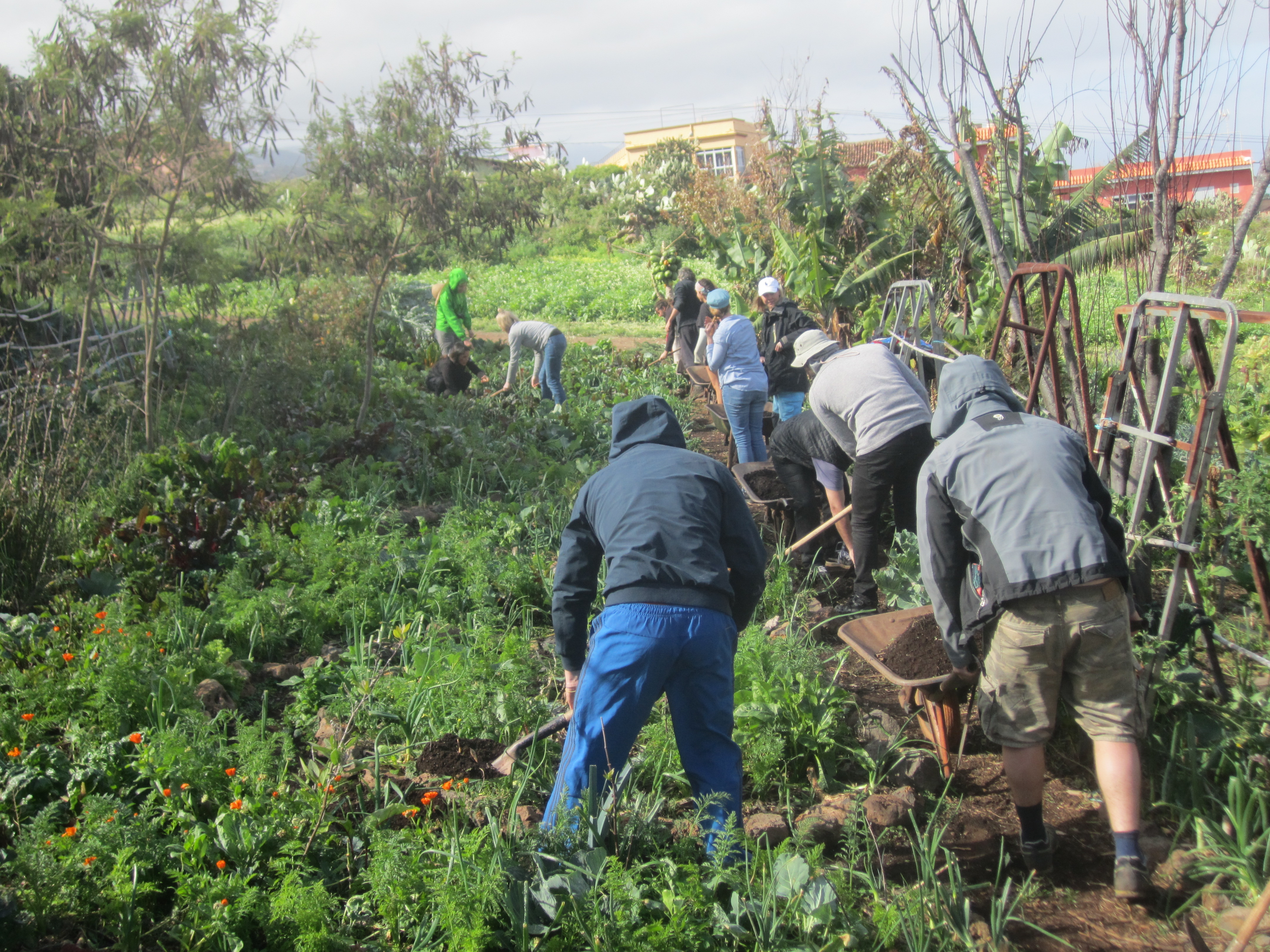
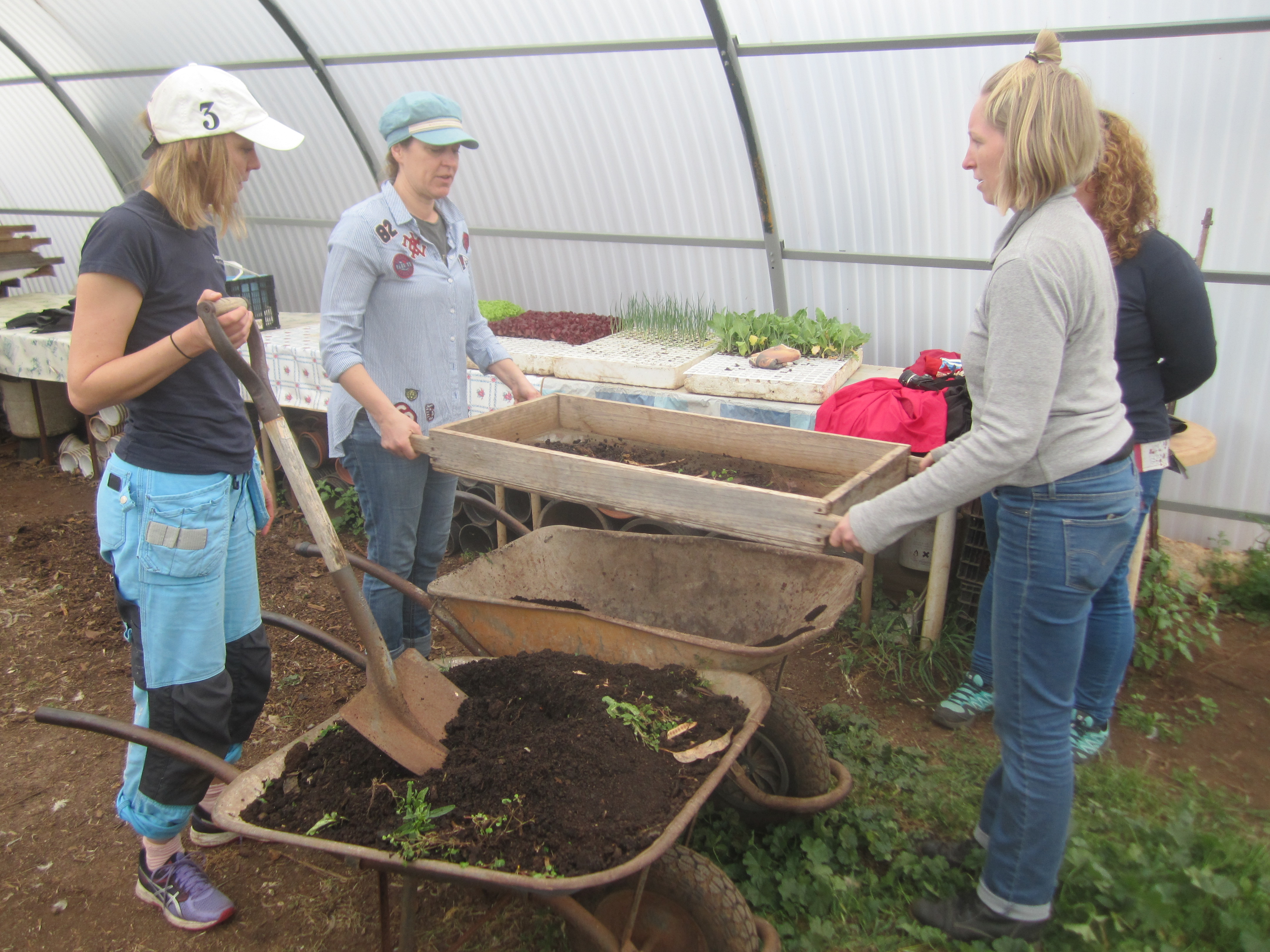
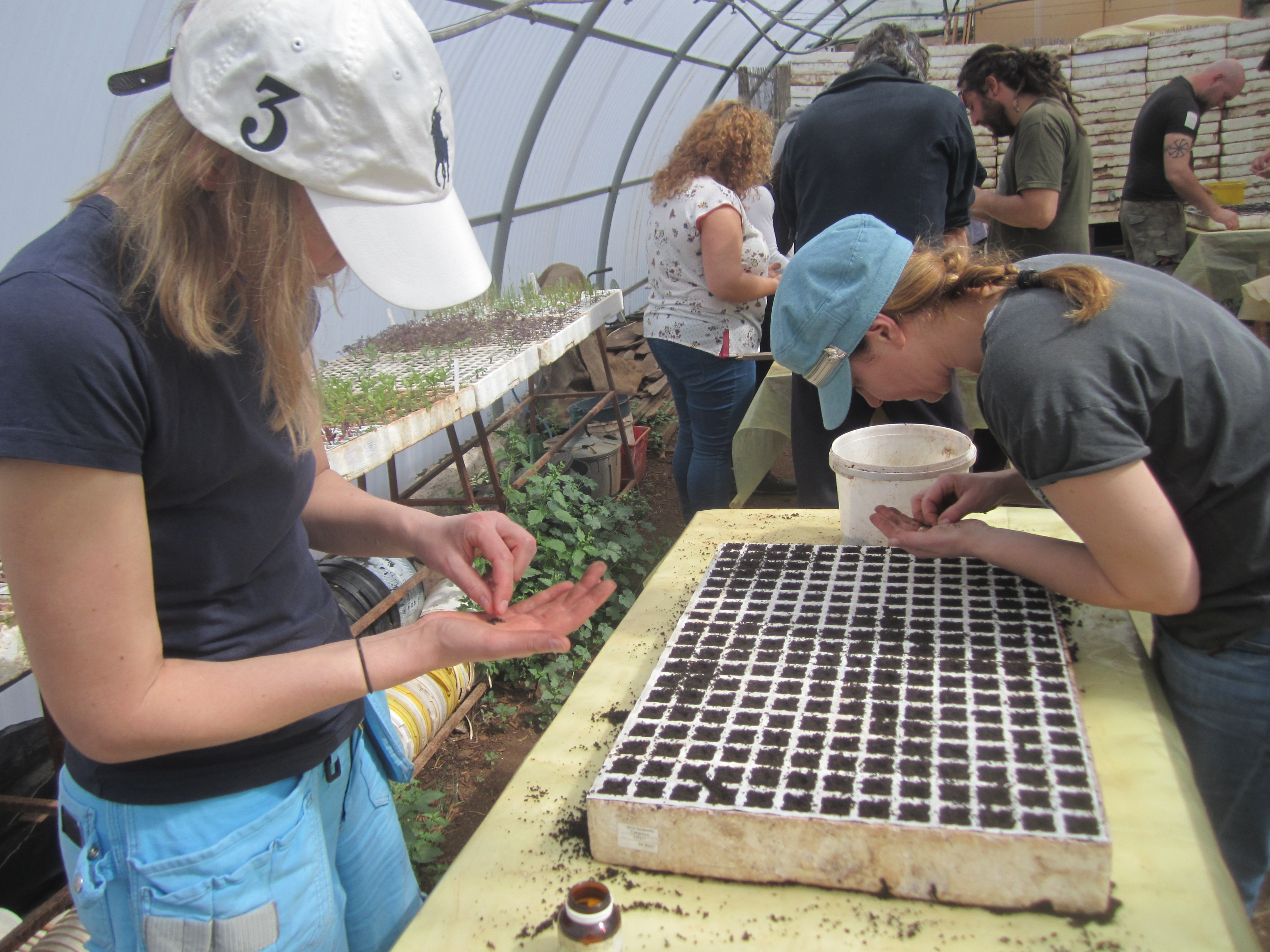
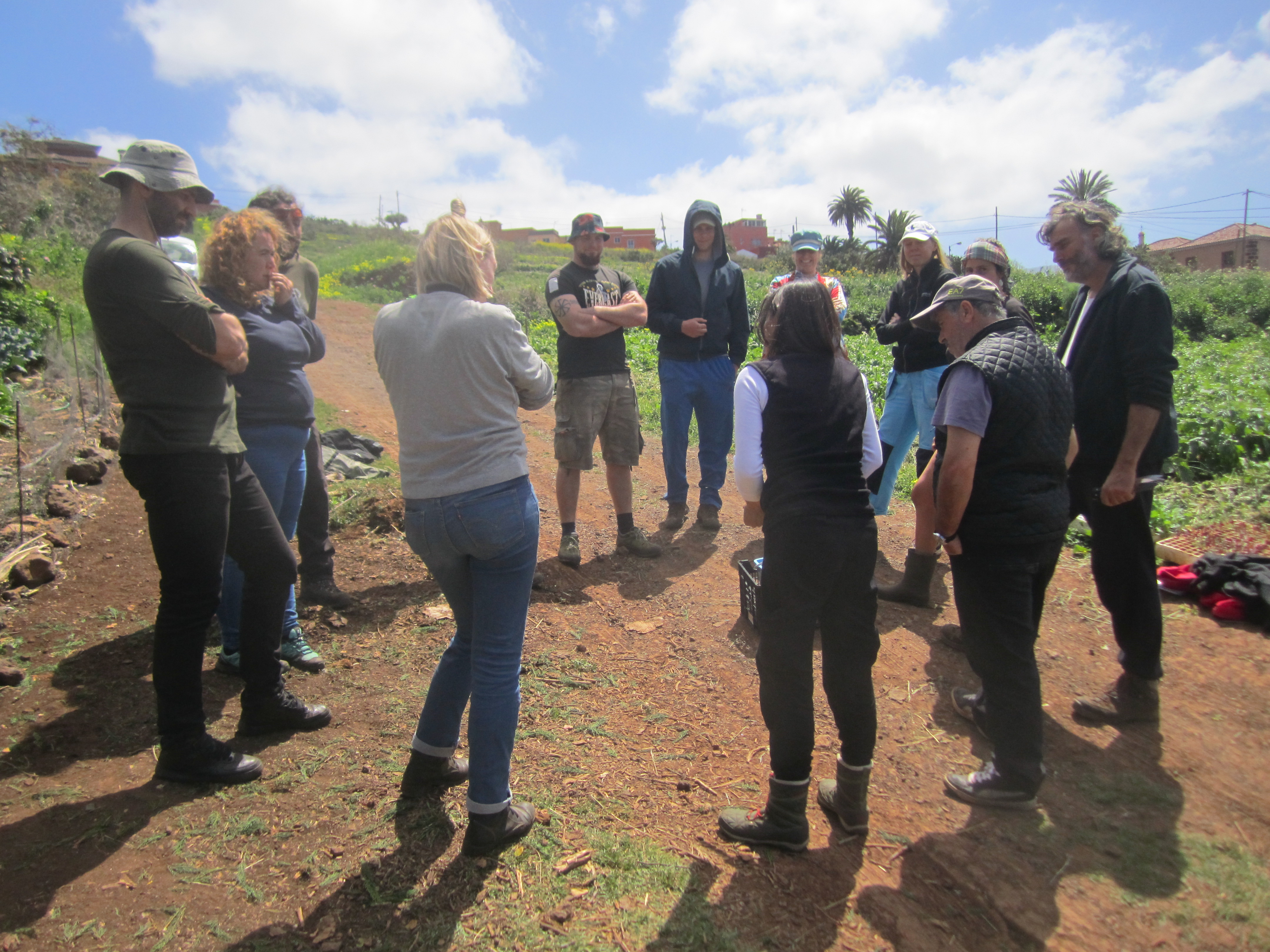
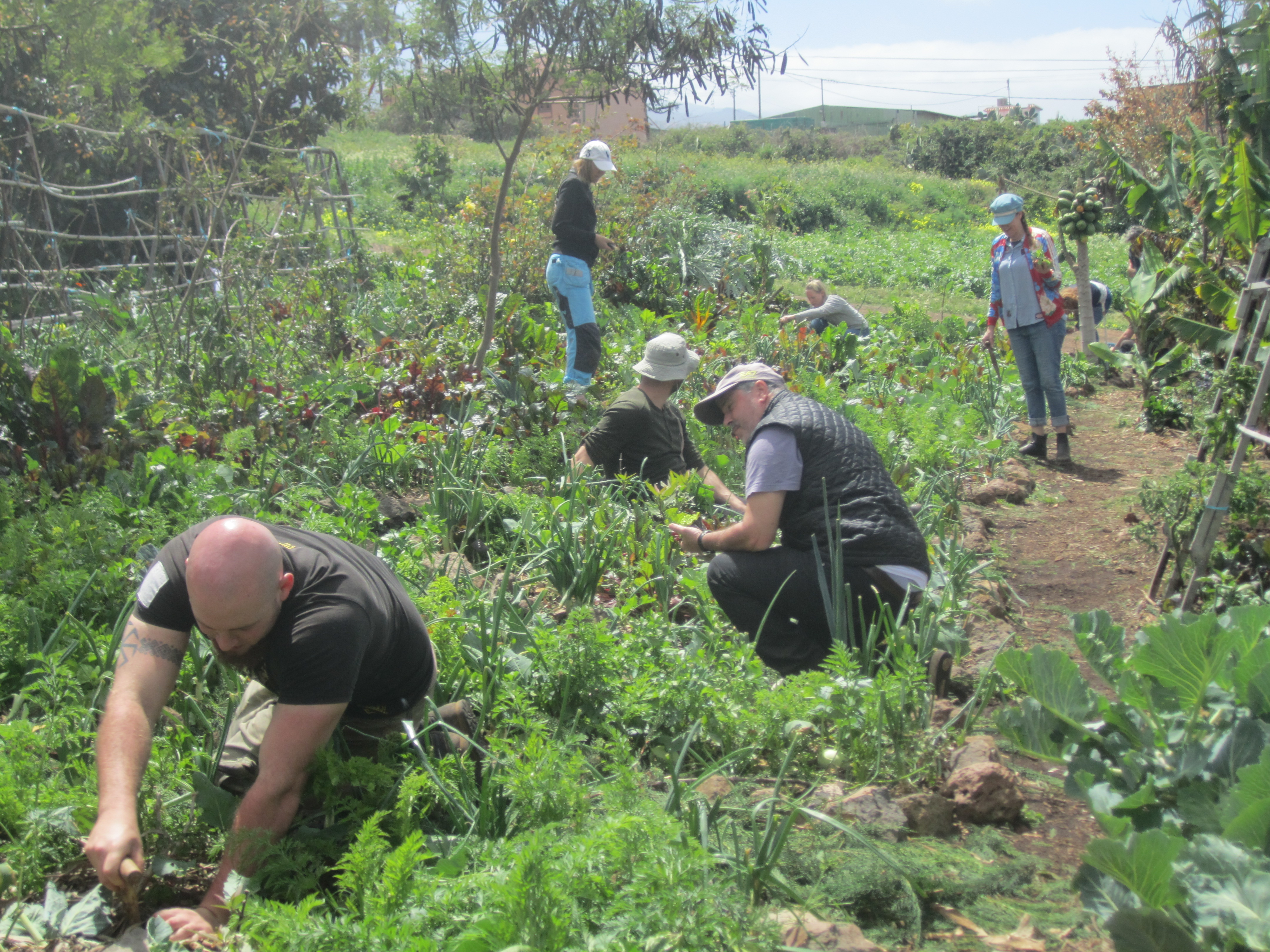
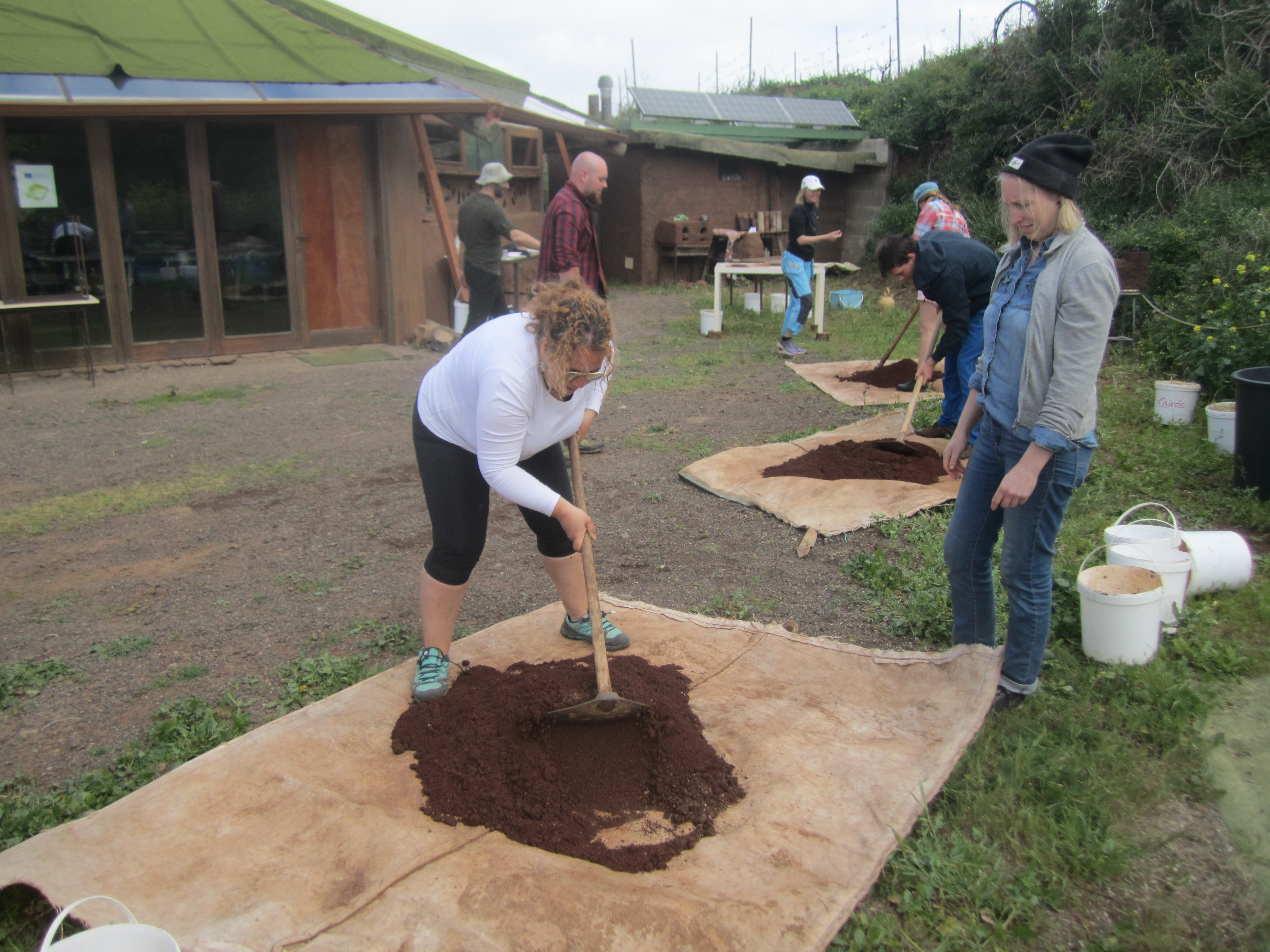

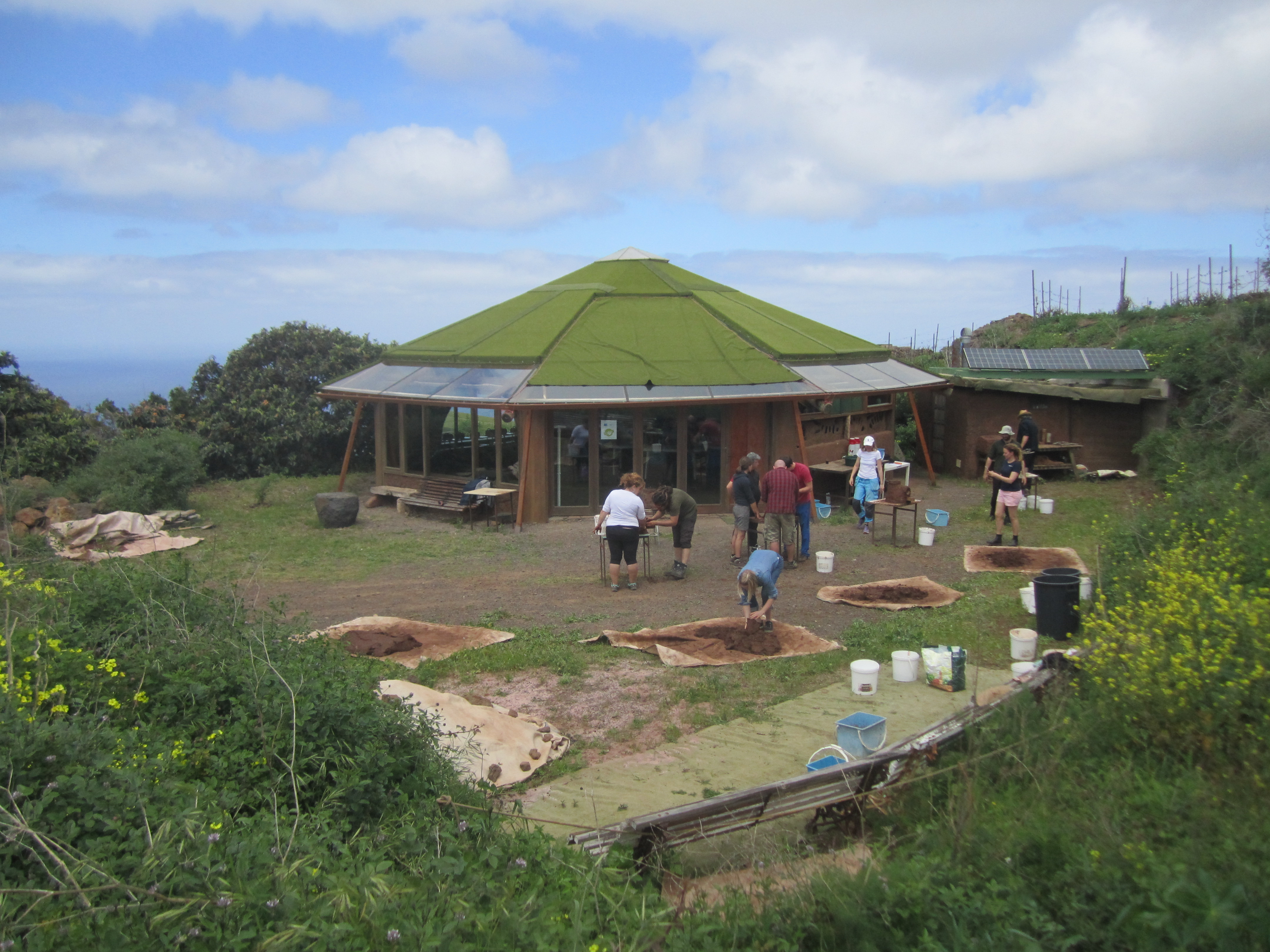
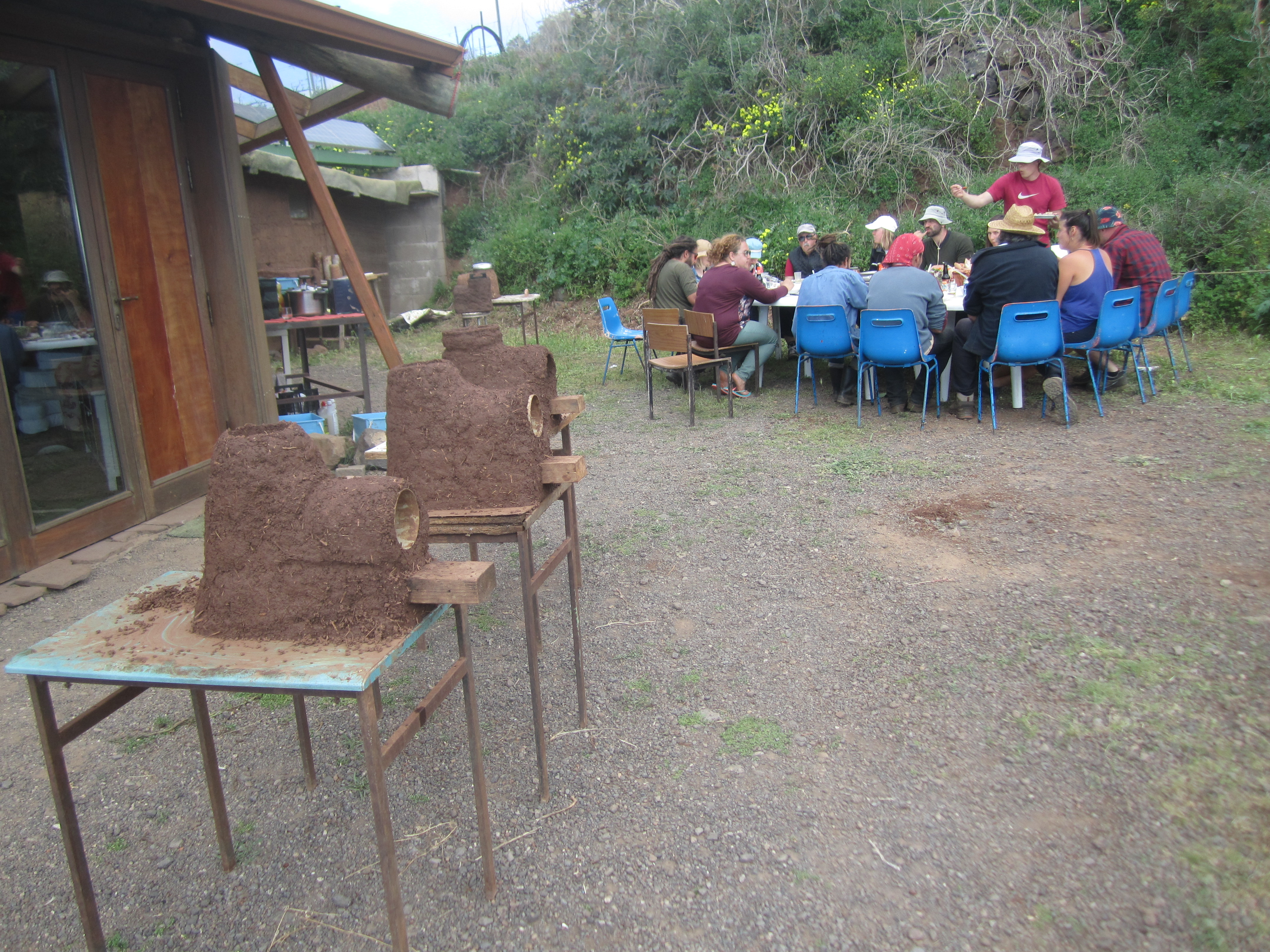
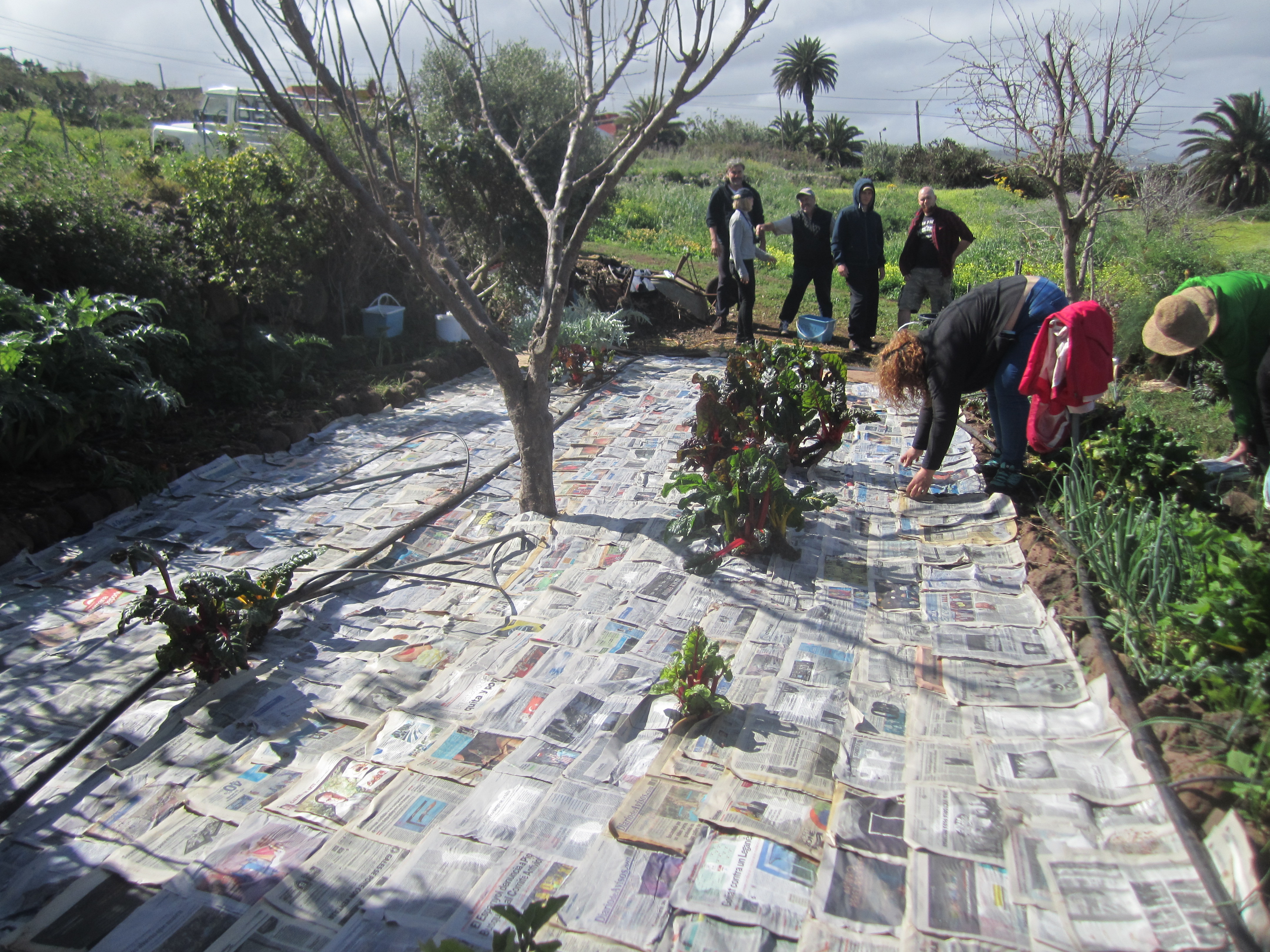
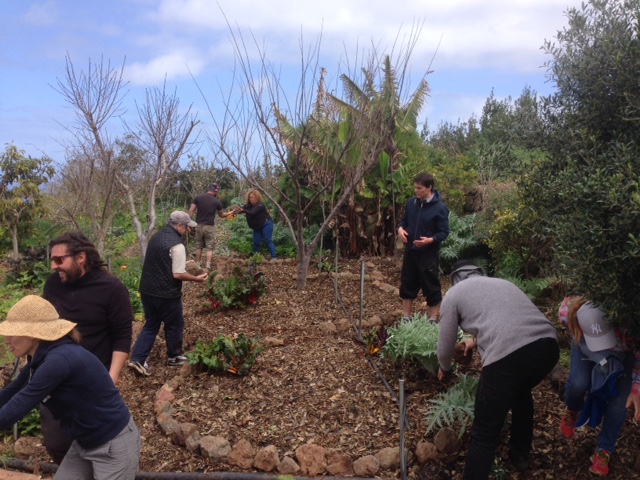
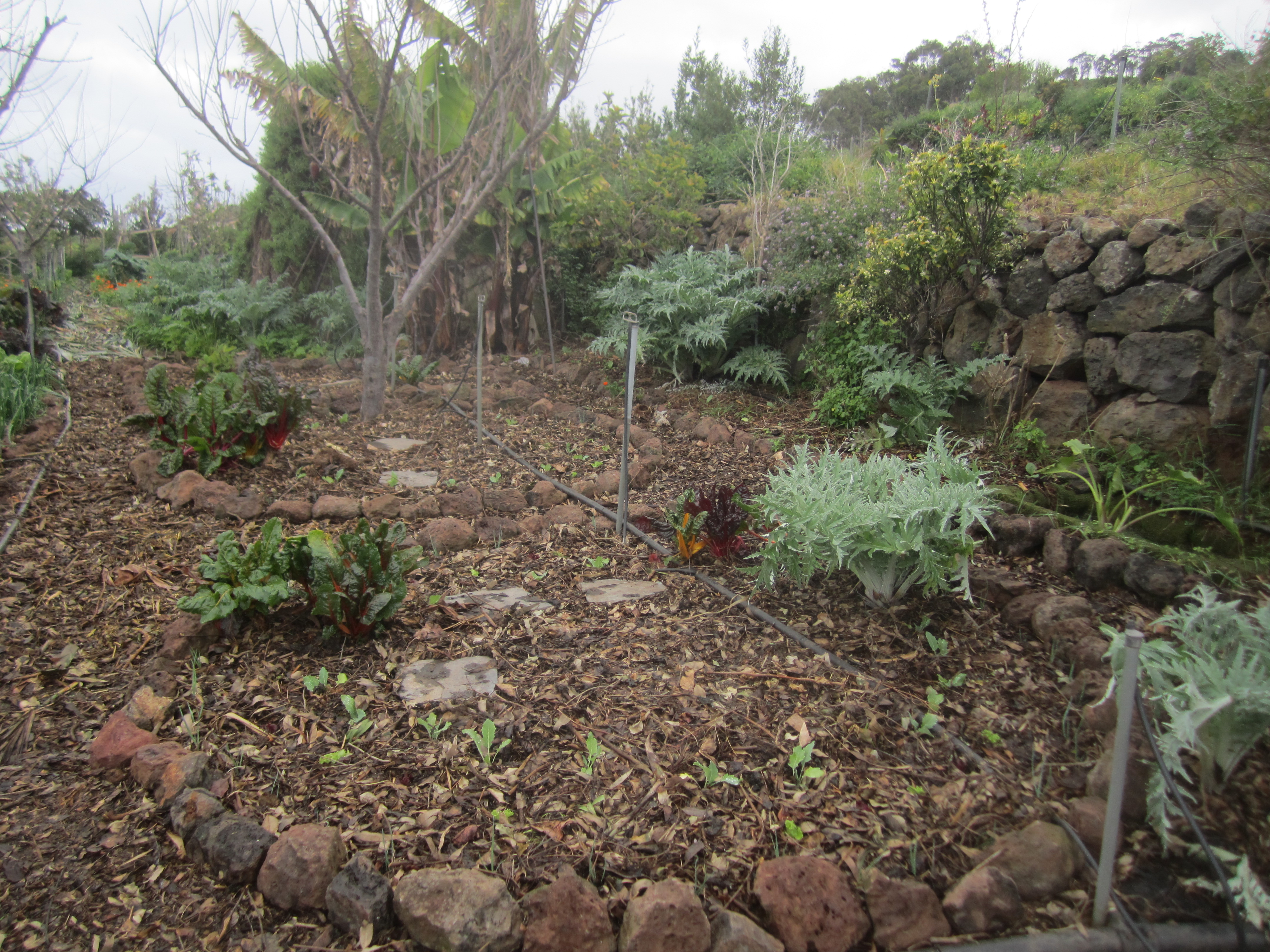
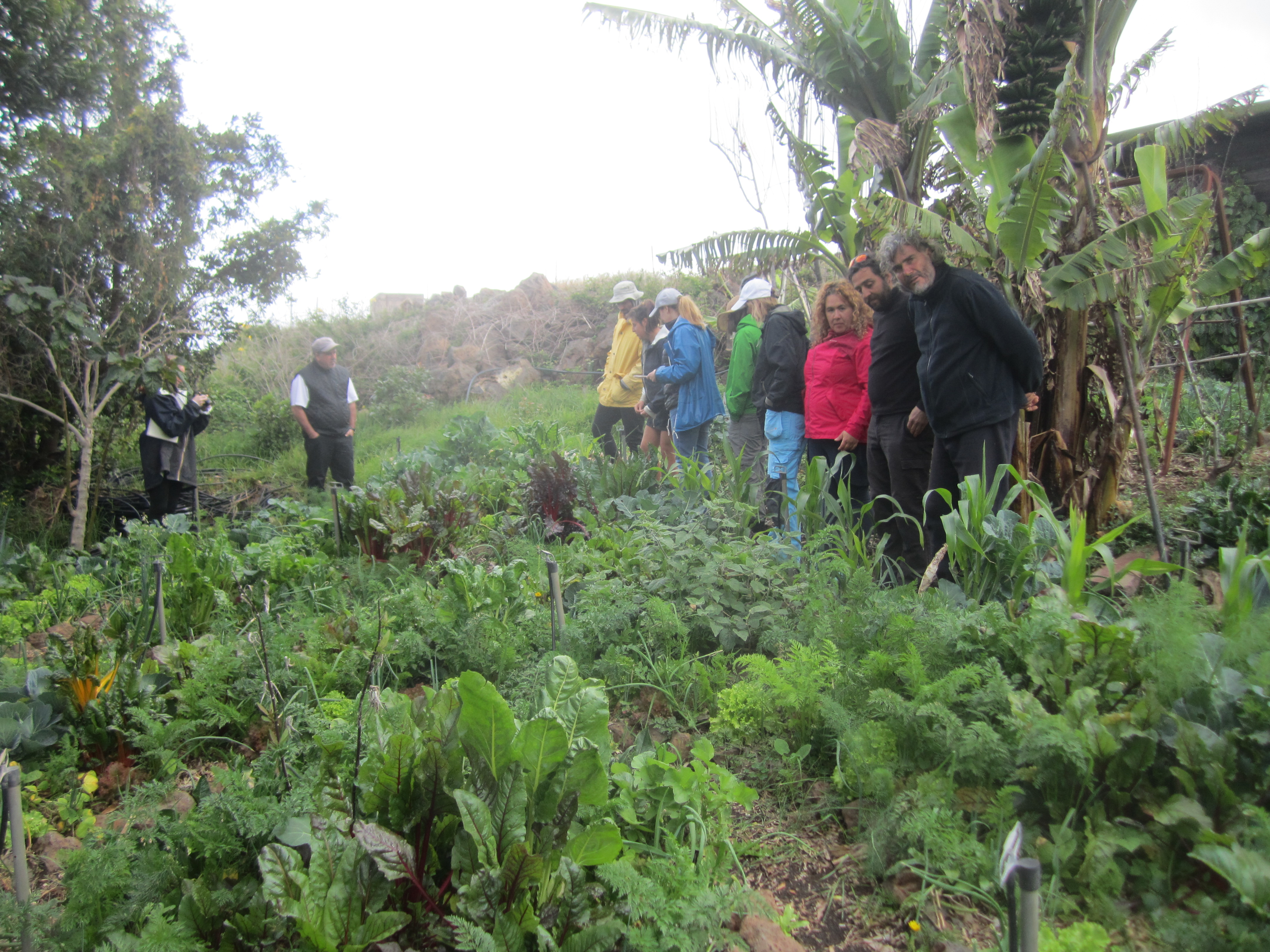
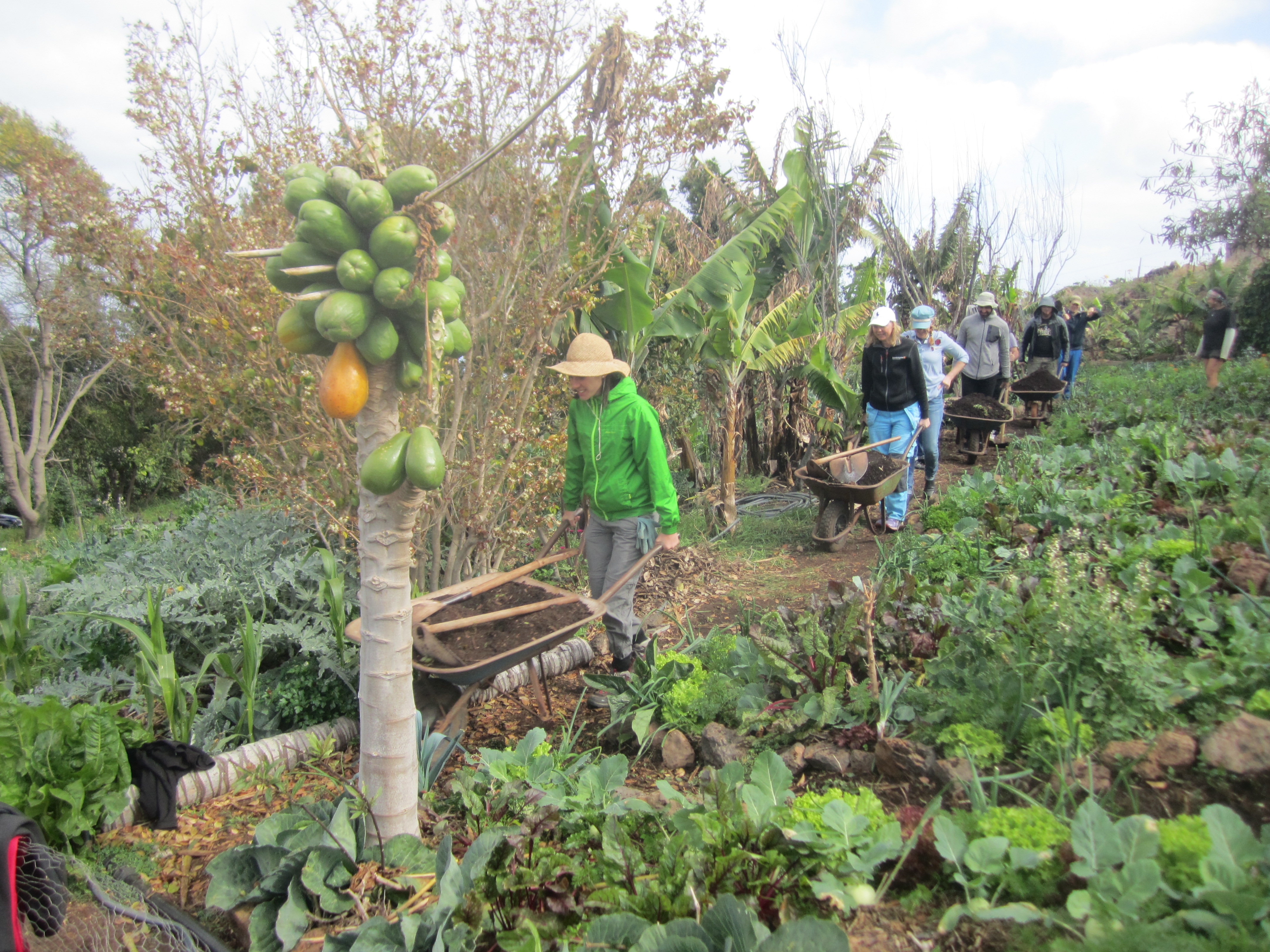
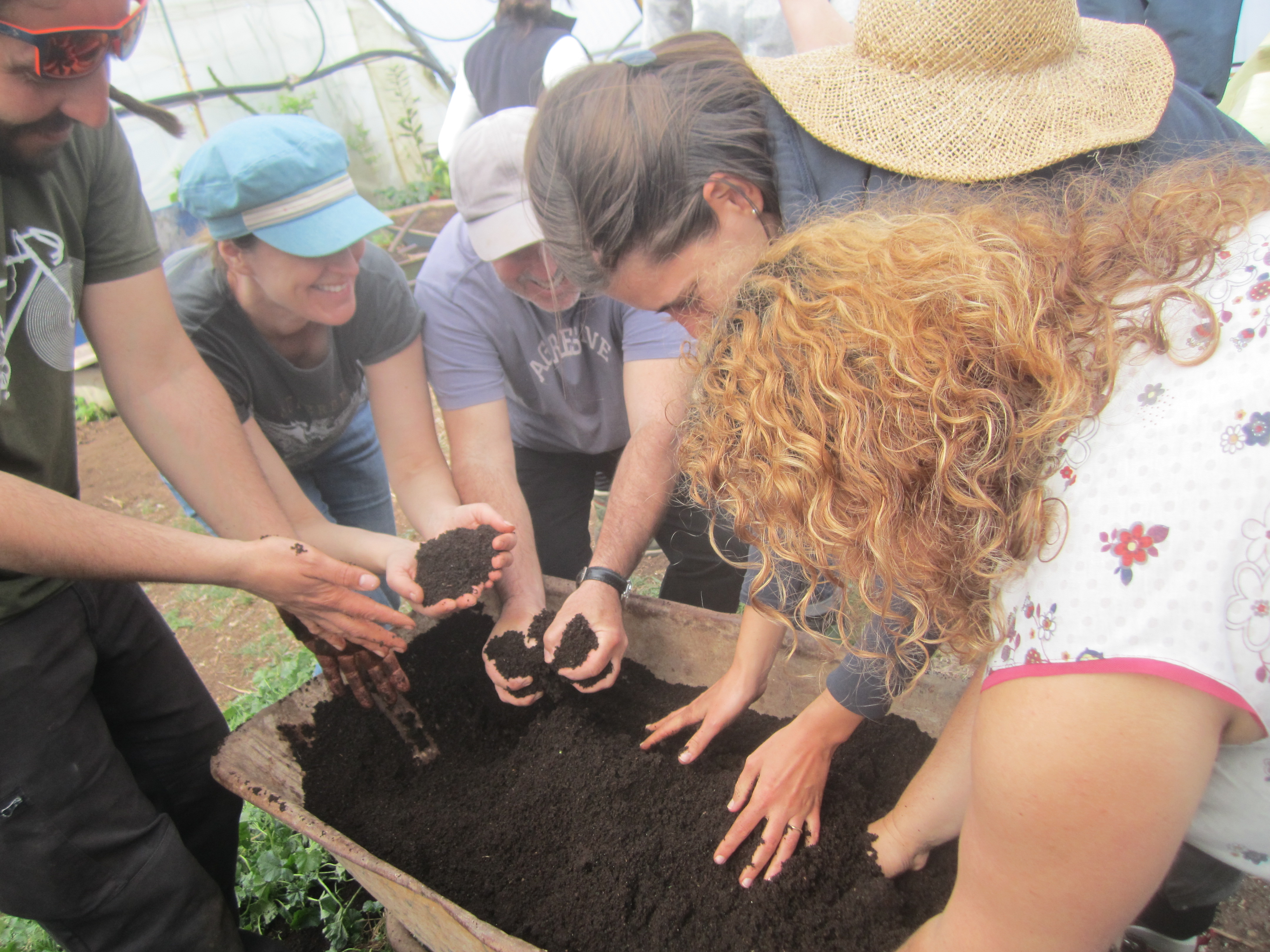
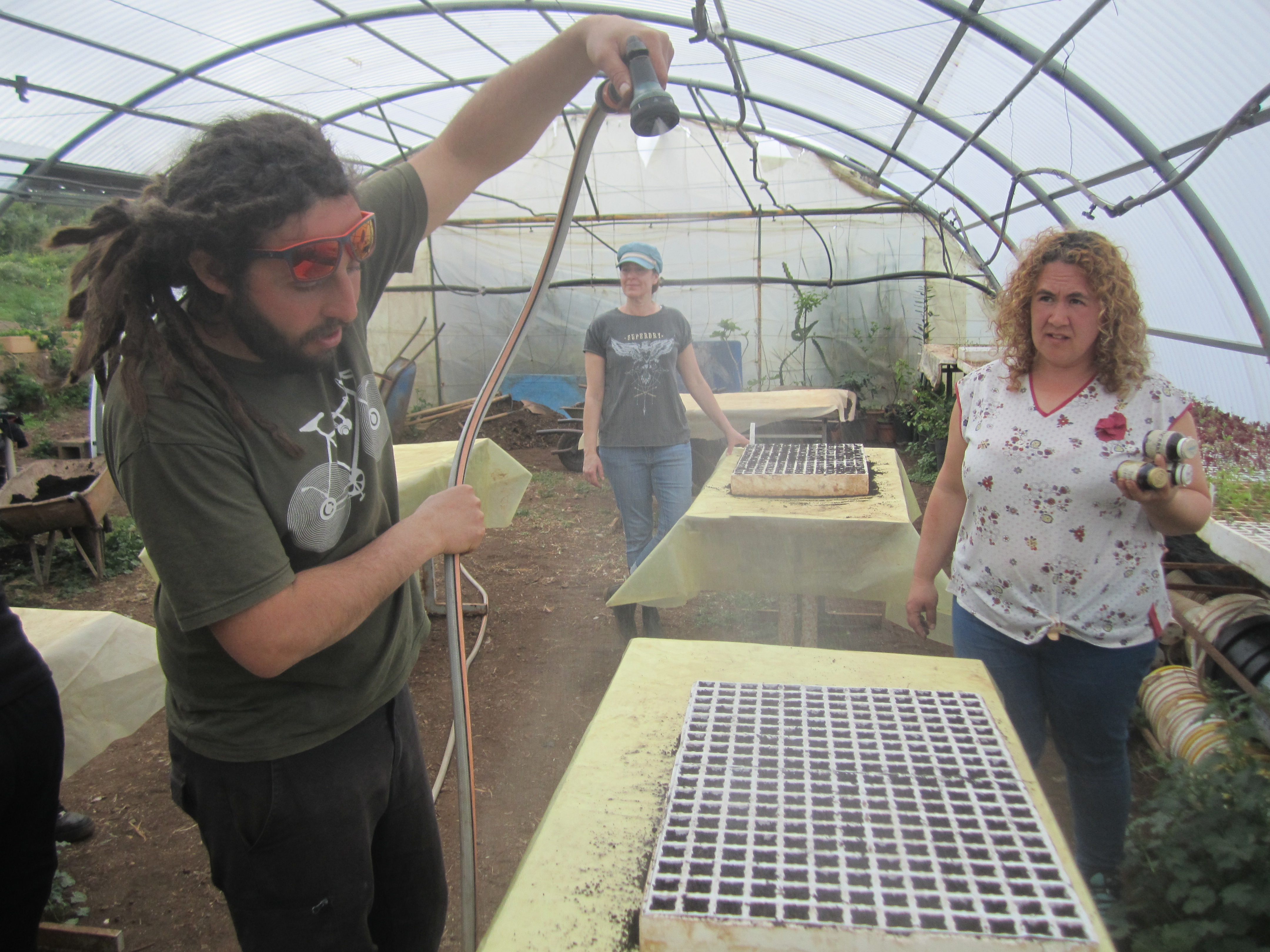

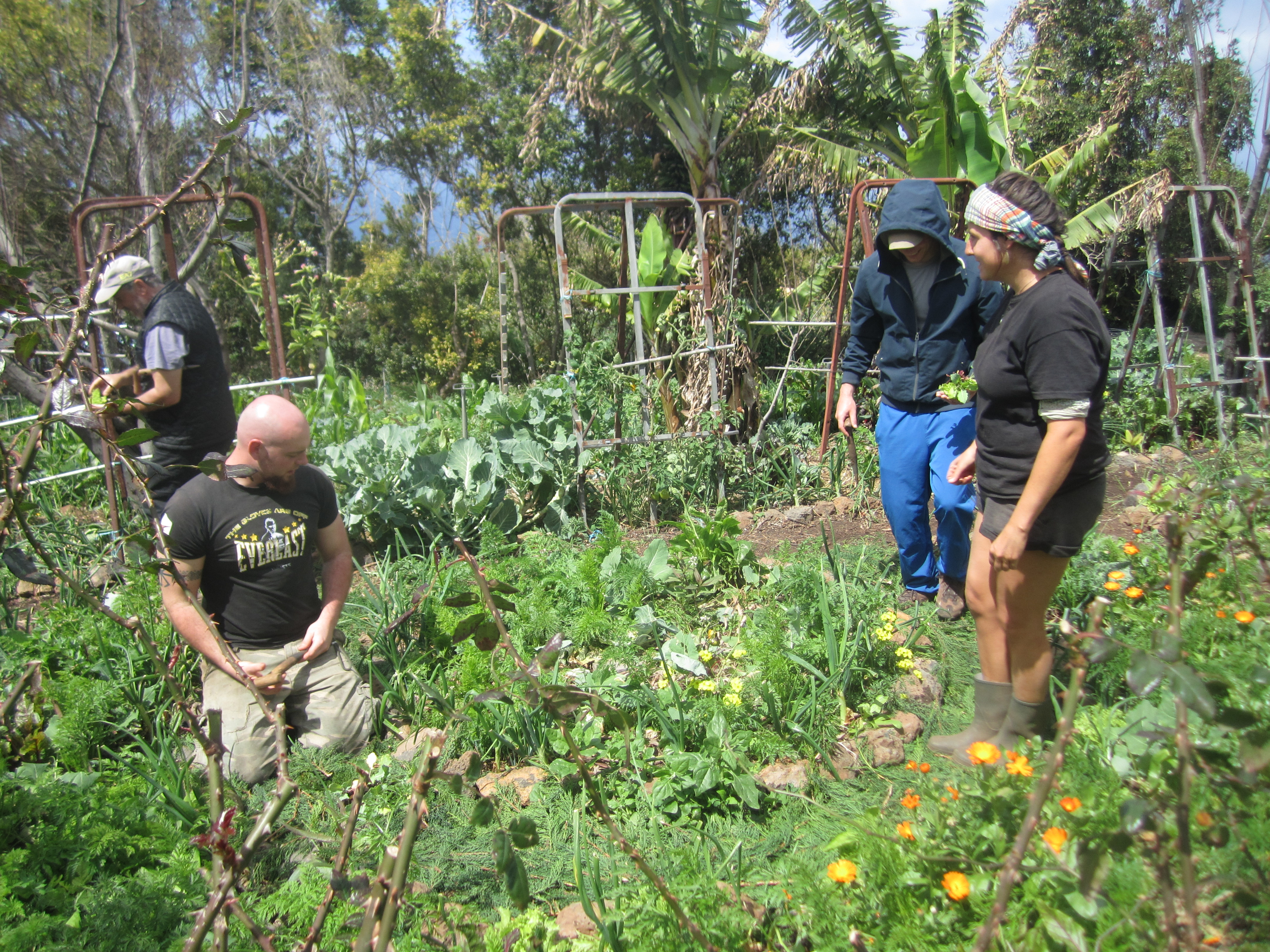
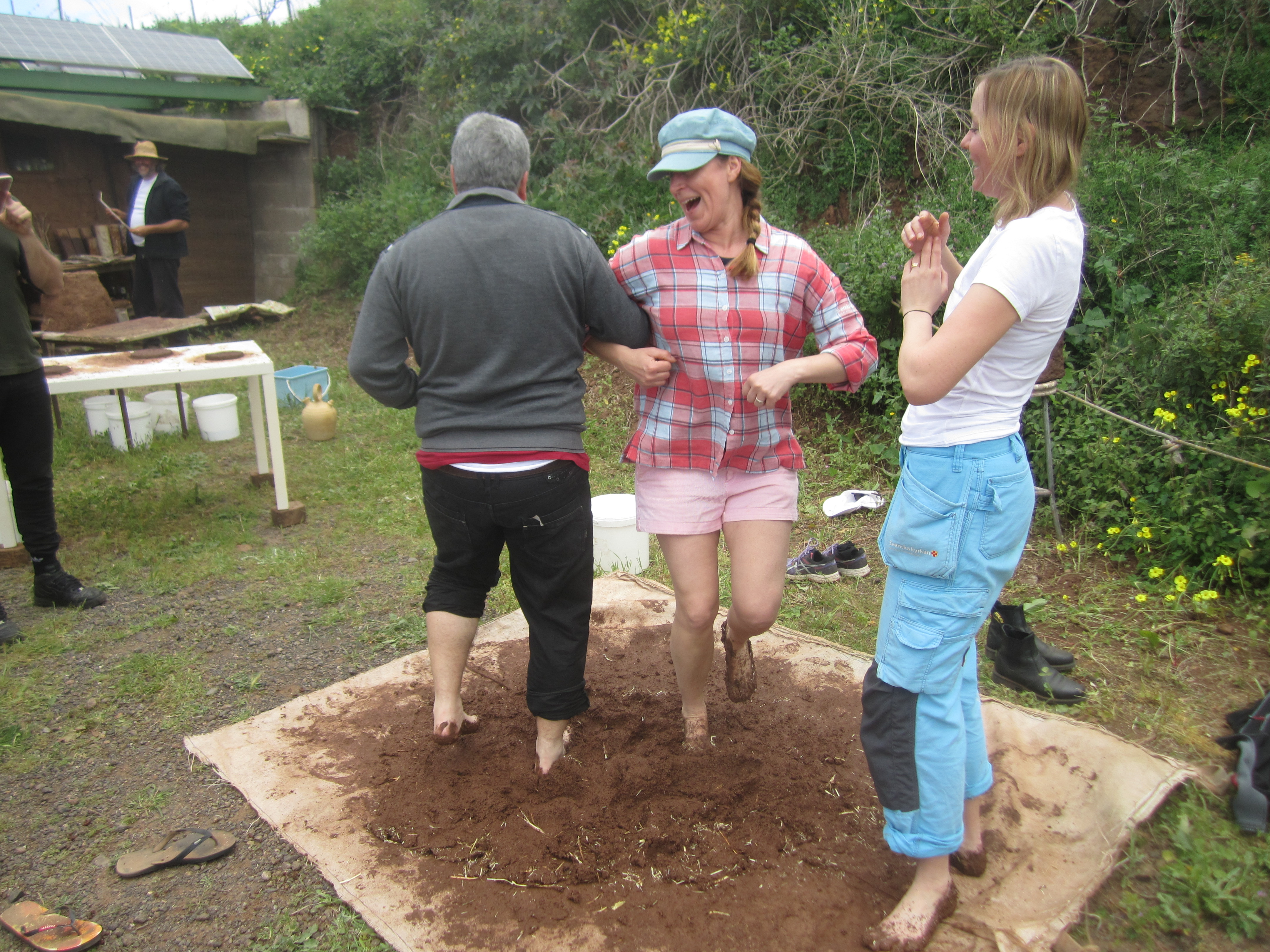
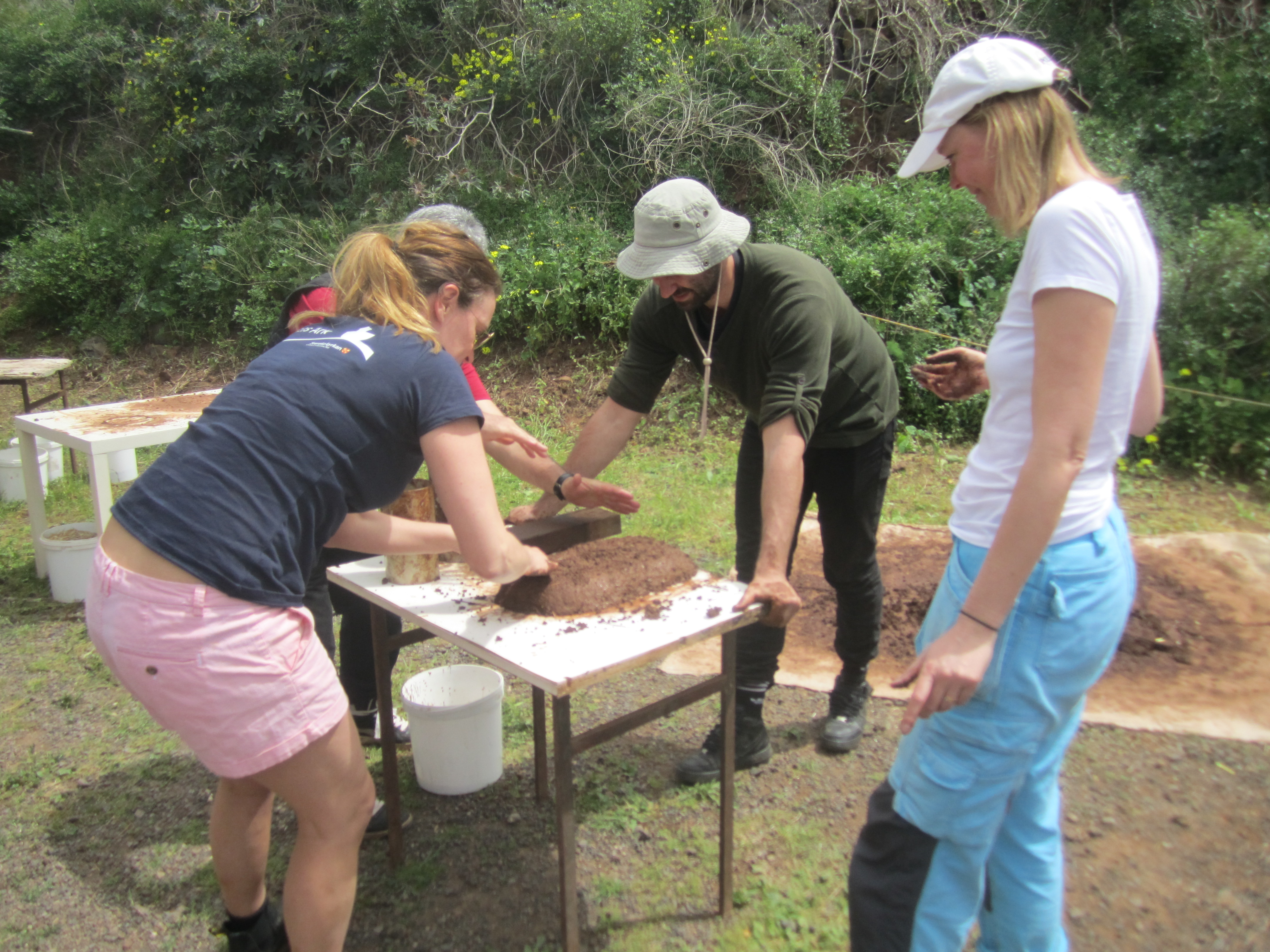

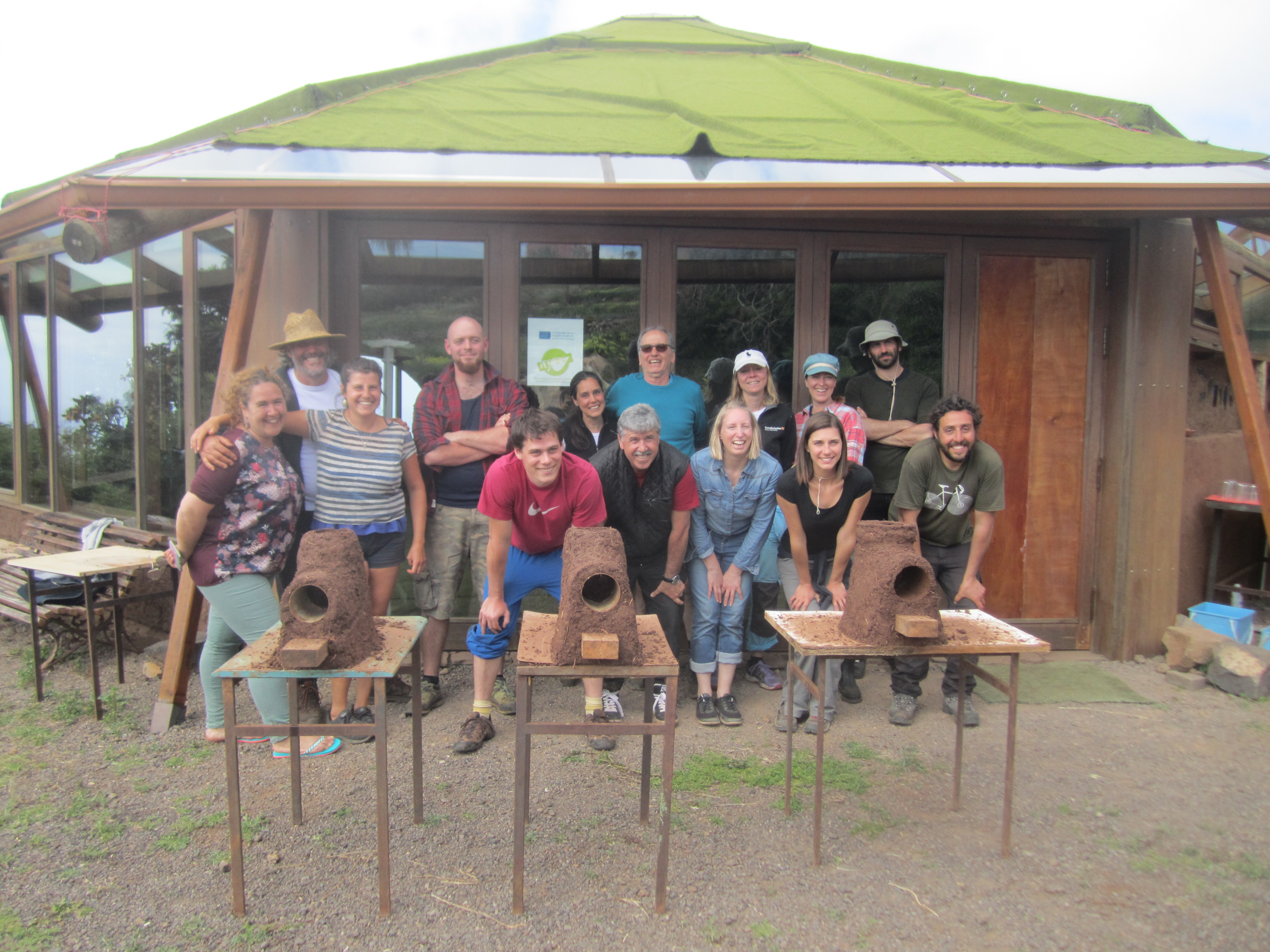
Figure Met.4.- Collage of the PERMIND Course of Training for Trainers in Finca El Mato Tinto (19-23 March, 2018)





